Ringworm on Arms and Legs: Identifying and Treating Fungal Skin Infections
What does ringworm look like on arms and legs. How to differentiate ringworm from other skin conditions. What are effective treatments for ringworm infections. Who is most at risk for developing ringworm. How to prevent the spread of ringworm.
Understanding Ringworm: Causes and Characteristics
Ringworm, medically known as tinea corporis, is a common fungal skin infection that can affect various parts of the body, including the arms and legs. Despite its name, ringworm is not caused by a worm but by fungi called dermatophytes. These fungi thrive in warm, moist environments and can spread through direct contact with infected individuals, animals, or contaminated objects.
The classic appearance of ringworm is a circular, ring-like rash with a raised, scaly border. However, the presentation can vary, making it challenging to distinguish from other skin conditions. Let’s explore the key characteristics of ringworm:
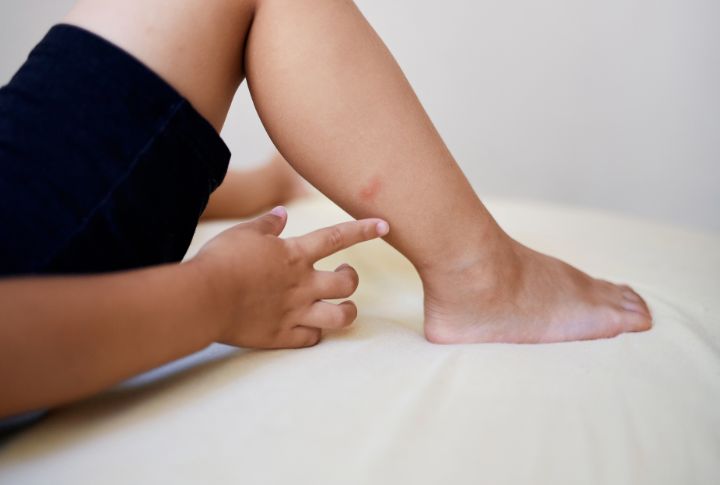
- Circular or ring-shaped patches
- Raised, scaly edges
- Red, itchy, or burning skin
- Clear central area as the rash expands
- Possible hair loss in affected areas
Why does ringworm often appear circular? The fungus grows outward from the center, creating the distinctive ring-like pattern. As it spreads, the central area may clear up, leaving a ring of infected skin around the edges.
Common Locations for Ringworm on Arms and Legs
Ringworm can develop on various parts of the body, but it frequently appears on the arms and legs due to their exposure to potential sources of infection. Common locations include:
- Forearms
- Upper arms
- Thighs
- Calves
- Ankles
Why are the arms and legs particularly susceptible to ringworm? These areas often come into contact with infected surfaces or animals, increasing the risk of exposure. Additionally, the warm, sometimes moist environment created by clothing can provide ideal conditions for fungal growth.
Ringworm Lookalikes: Conditions That Mimic Fungal Infections
Several skin conditions can resemble ringworm, making accurate diagnosis crucial for proper treatment. Some common ringworm imposters include:

Nummular Eczema
This type of eczema causes circular patches of dry, scaly skin that can be mistaken for ringworm. Unlike ringworm, nummular eczema is often triggered by factors such as insect bites, certain medications, or metal allergies.
Granuloma Annulare
This condition produces ring-like patterns of bumps on the skin, which can be red or flesh-colored. Various factors, including viral infections, skin trauma, and thyroid disorders, may trigger granuloma annulare.
Other Conditions That May Resemble Ringworm
- Contact dermatitis
- Psoriasis
- Pityriasis rosea
- Tinea versicolor (more common in children)
- Vitiligo
- Erythema migrans (associated with Lyme disease)
- Lupus
How can you differentiate between ringworm and these conditions? While visual inspection can provide clues, a definitive diagnosis often requires evaluation by a dermatologist. In some cases, a skin biopsy may be necessary to confirm the presence of fungal infection.
Who’s at Risk: Factors That Increase Susceptibility to Ringworm
While ringworm can affect anyone, certain factors can increase an individual’s risk of developing the infection. Understanding these risk factors can help in prevention and early detection:

- Age: Children are particularly susceptible to ringworm infections.
- Contact with infected individuals or animals: Direct skin-to-skin contact or handling infected pets can transmit the fungus.
- Participation in contact sports: Athletes, especially wrestlers, are at higher risk due to close physical contact and shared equipment.
- Weakened immune system: Individuals with compromised immunity are more vulnerable to fungal infections.
- Excessive sweating: Moist skin provides an ideal environment for fungal growth.
- Living in warm, humid climates: These conditions favor the survival and spread of dermatophytes.
- Existing fungal infections: Having tinea infections on other parts of the body increases the risk of developing ringworm elsewhere.
Why are children more prone to ringworm infections? Children often have closer physical contact with peers and pets, and their immune systems may not be fully developed, making them more susceptible to fungal infections.
Diagnosis and Treatment: Addressing Ringworm Effectively
Proper diagnosis and timely treatment are essential for managing ringworm infections. Here’s an overview of the diagnostic process and treatment options:

Diagnosis
A dermatologist can often diagnose ringworm through visual examination and patient history. In some cases, additional tests may be necessary:
- Wood’s lamp examination: Some fungi fluoresce under ultraviolet light.
- Skin scraping and microscopic examination: To identify fungal elements.
- Fungal culture: To confirm the specific type of fungus causing the infection.
Treatment Options
The treatment for ringworm depends on the severity and location of the infection. Common approaches include:
- Over-the-counter antifungal creams: For mild cases, topical treatments containing terbinafine, clotrimazole, or miconazole may be effective.
- Prescription antifungal medications: More severe or persistent cases may require stronger topical or oral antifungal drugs prescribed by a healthcare provider.
- Oral antifungal medications: For widespread or deep infections, oral antifungals like terbinafine or itraconazole may be necessary.
How long does it take for ringworm to clear up with treatment? With proper treatment, most ringworm infections improve within 2-4 weeks. However, it’s important to continue treatment as directed, even if symptoms improve, to prevent recurrence.
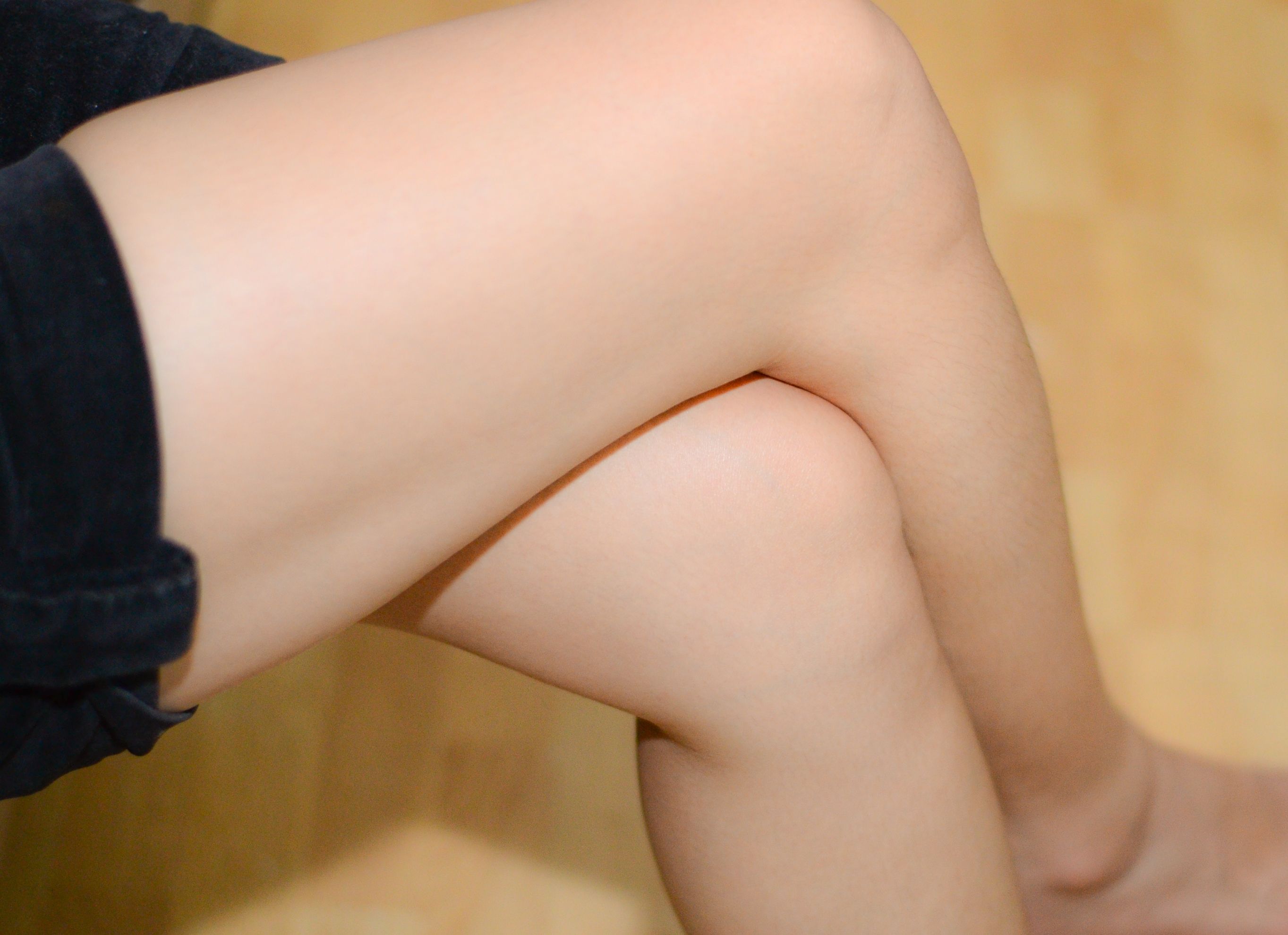
Prevention Strategies: Minimizing the Risk of Ringworm
While ringworm is treatable, prevention is always preferable. Here are some strategies to reduce the risk of contracting or spreading ringworm:
- Practice good hygiene: Wash hands regularly and keep skin clean and dry.
- Avoid sharing personal items: Don’t share towels, clothing, or grooming tools with others.
- Wear protective footwear: Use flip-flops or sandals in public showers, locker rooms, and pool areas.
- Keep skin dry: Change out of damp clothes promptly and dry off thoroughly after swimming or sweating.
- Regularly check pets for signs of fungal infections: Seek veterinary care if you suspect your pet has ringworm.
- Disinfect shared surfaces: Clean and disinfect gym equipment, mats, and other shared items before use.
How effective are these prevention strategies? While they can significantly reduce the risk of ringworm, it’s important to remember that no method is 100% foolproof. Remaining vigilant and promptly addressing any suspicious skin changes is key to preventing the spread of infection.
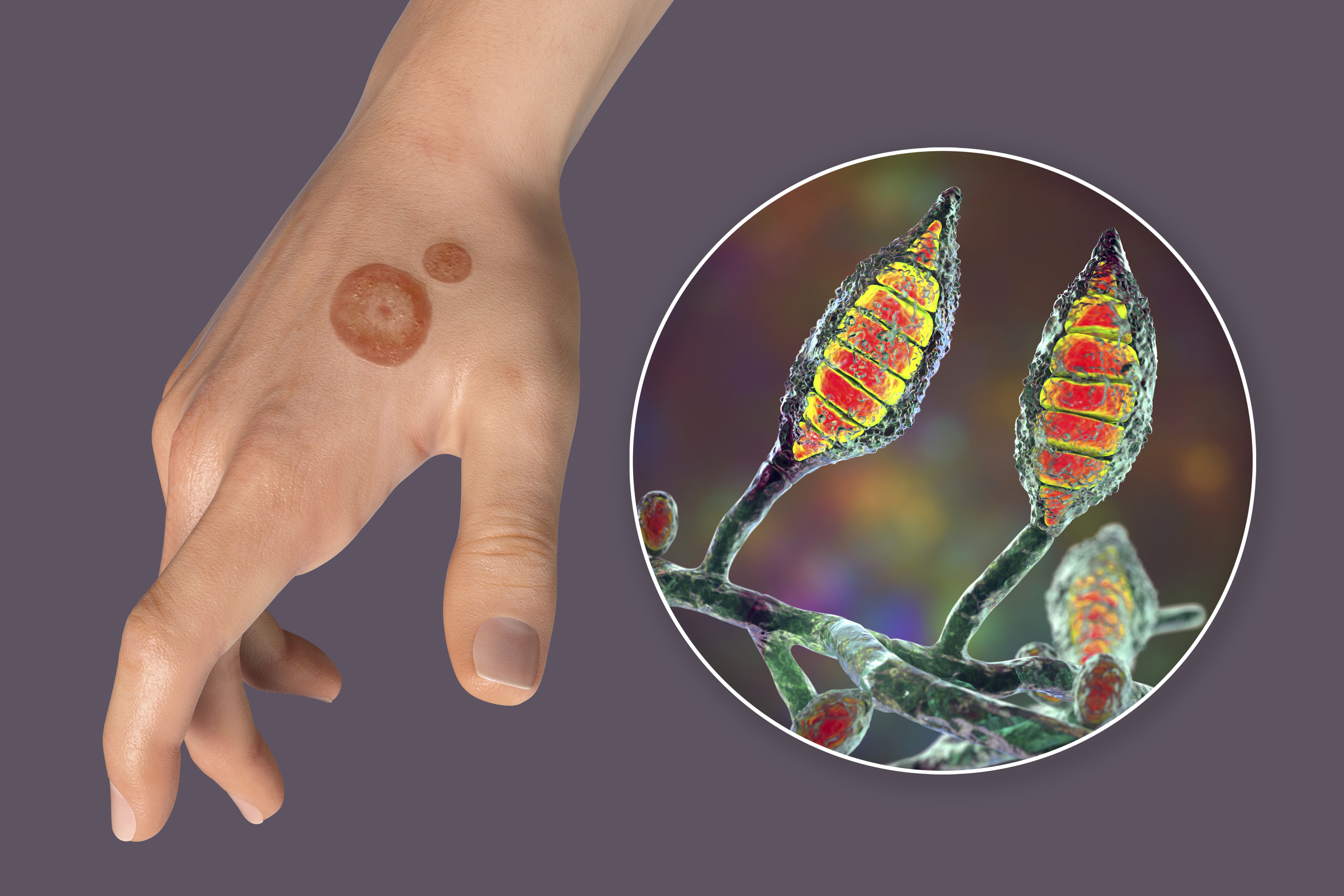
When to Seek Professional Help: Recognizing Severe Cases
While many cases of ringworm can be managed with over-the-counter treatments, certain situations warrant professional medical attention. Consider consulting a healthcare provider if:
- The rash doesn’t improve after two weeks of self-treatment
- The infection appears to be spreading or worsening
- You develop multiple lesions or a widespread rash
- The rash occurs on the scalp or beard area
- You have a weakened immune system
- You experience severe itching or pain
- The affected skin becomes warm, swollen, or begins to drain pus
Why is prompt medical attention important in these cases? Severe or persistent infections may indicate a deeper fungal invasion or a misdiagnosed condition. Additionally, individuals with compromised immunity may be at risk for more serious complications if the infection is left untreated.
Living with Ringworm: Managing Symptoms and Preventing Spread
If you’ve been diagnosed with ringworm, taking proper care of your skin and preventing the spread of infection to others is crucial. Here are some tips for managing ringworm:

- Follow treatment instructions carefully: Apply medications as directed and complete the full course of treatment.
- Keep the affected area clean and dry: Gently wash the area daily and pat dry thoroughly.
- Avoid scratching: This can lead to secondary bacterial infections and spread the fungus to other areas.
- Use separate towels and washcloths: Avoid sharing these items with others to prevent transmission.
- Wash bedding and clothing frequently: Use hot water and detergent to kill the fungus.
- Wear loose-fitting, breathable clothing: This helps keep the skin dry and less hospitable to fungal growth.
- Monitor for improvement: If symptoms persist or worsen, consult your healthcare provider.
How can you prevent spreading ringworm to family members or close contacts? In addition to the measures above, it’s important to avoid direct skin contact with others until the infection clears. If you have children with ringworm, inform their school or daycare providers to prevent further spread.
Understanding ringworm and its manifestations on the arms and legs is crucial for early detection and effective treatment. By recognizing the symptoms, differentiating it from similar conditions, and taking appropriate preventive measures, you can minimize the impact of this common fungal infection. Remember, when in doubt, seeking professional medical advice is always the best course of action to ensure proper diagnosis and treatment.
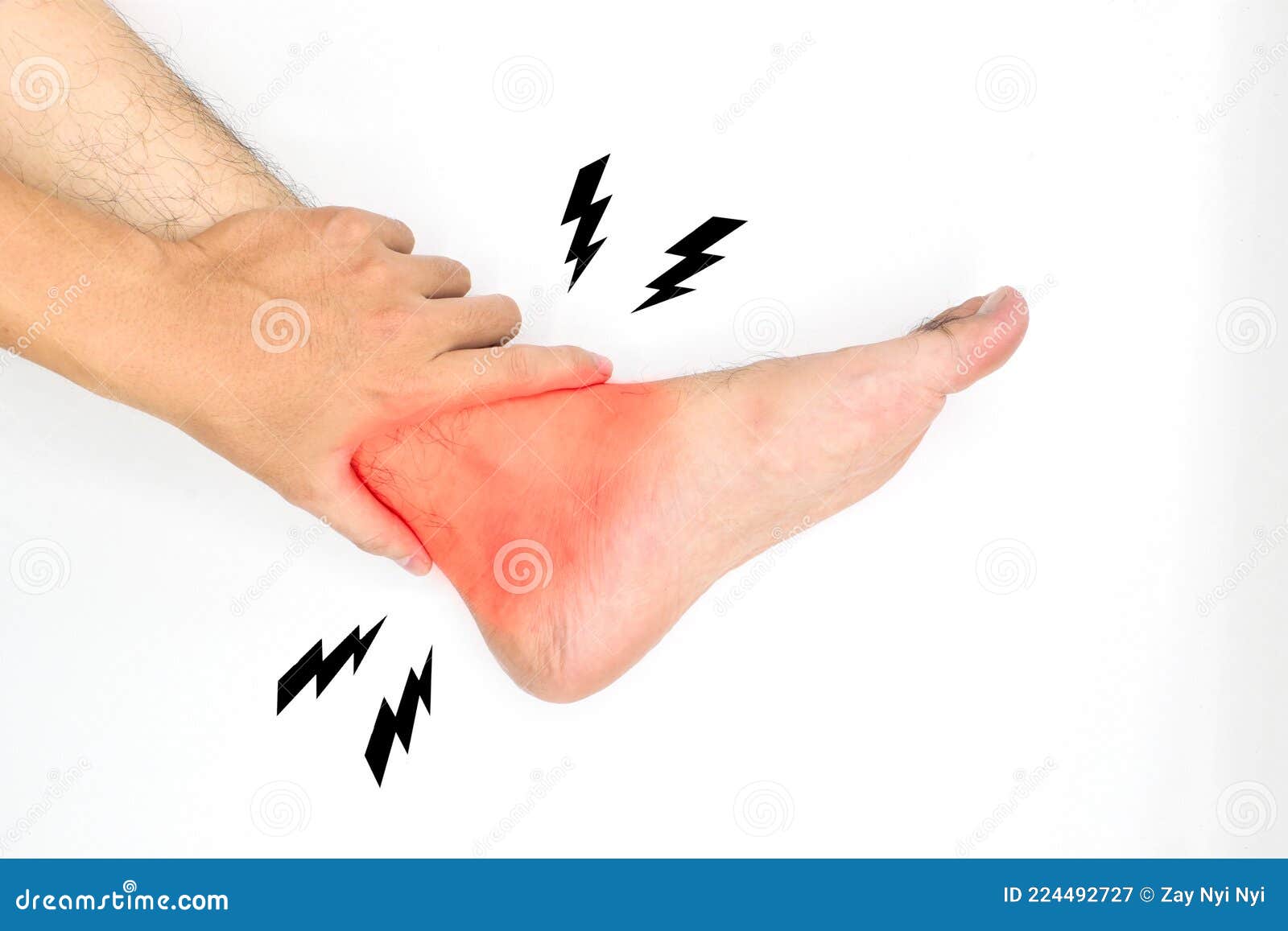
Is My Rash Ringworm or Something Else?
posted: Sep. 16, 2020.
There are many reasons that you might be dealing with a skin rash; however, if you suspect that it might be ringworm you may be surprised to discover that there are other conditions that can often masquerade as ringworm but aren’t. This is why it’s important to have any rashes or skin problems thoroughly evaluated by a qualified dermatologist. After all, you want to make sure that you are getting the proper treatment you need depending on the type of condition you’re dealing with.
What does ringworm look like?
If you have ringworm, common symptoms include:
- A circular or ring-like rash that may be raised along the edges
- A rash that may be scaly, itchy, red, or burning
- Hair loss in the area where the rash has appeared
The rash may develop several red, raised rings at once, some of which may overlap. While ringworm can develop just about anywhere on the body it’s most commonly found on the arms, legs, and trunk.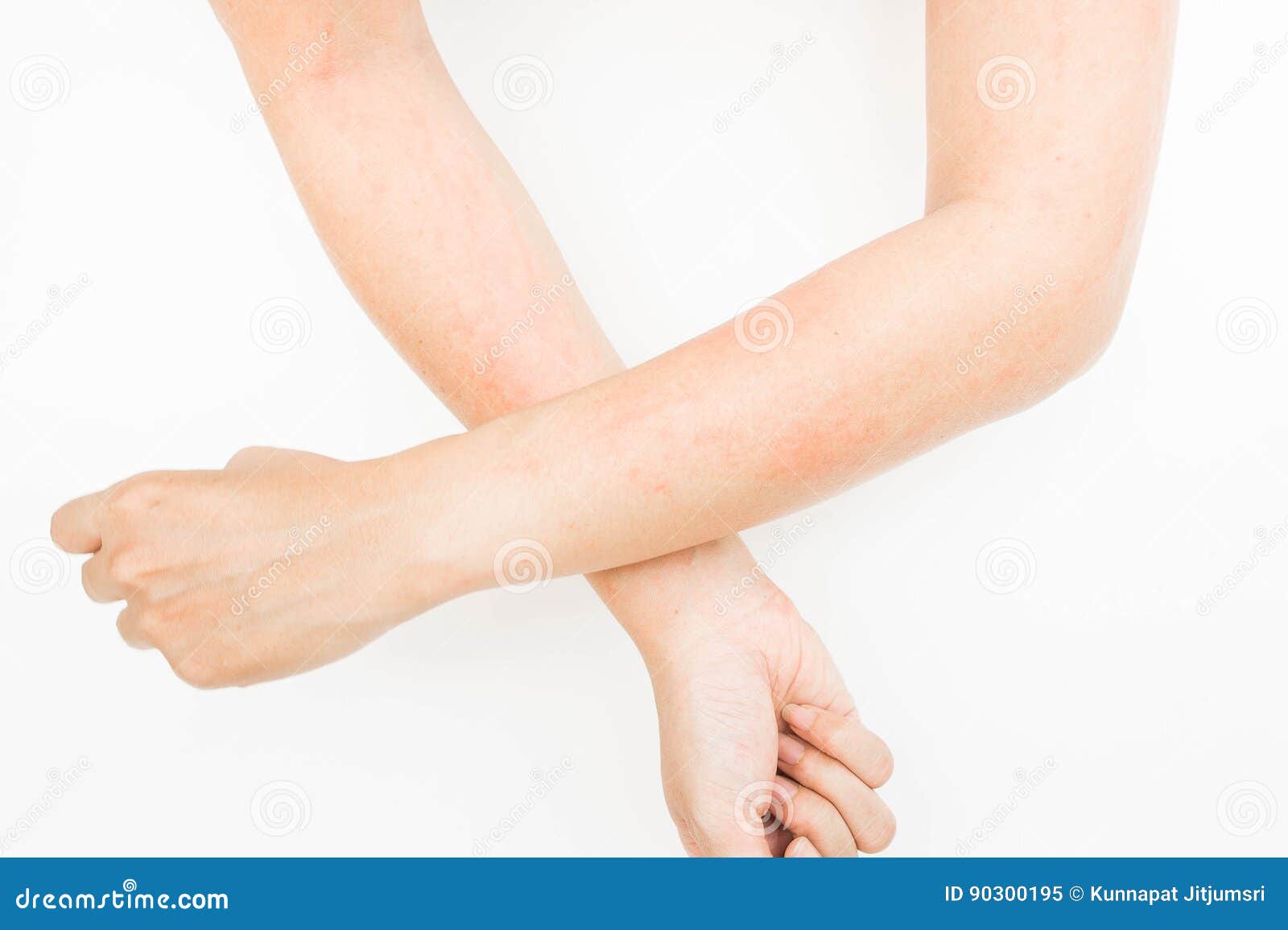
If it’s not ringworm, then what else could it be?
There are a variety of ringworm imposters that could be causing you or your child’s rash. The two most common conditions are nummular eczema and granuloma annulare.
Nummular eczema causes circular patches of dry skin that can burn or become dry and scaly. This type of skin condition is often triggered by bug bites, certain medications, or a metal allergy. Granuloma annulare causes red or flesh-colored bumps to appear on the skin, but because they often appear ring-like this condition can be mistaken for ringworm. Everything from medications and viral infections to skin trauma and thyroid disorders can trigger granuloma annulare.
Other less common symptoms that may look like ringworm include,
- Contact dermatitis
- Psoriasis
- Pityriasis rosea
- Tinea versicolor (more common in children)
- Vitiligo
- Erythema migrans (common in those with Lyme disease)
- Lupus
Sometimes a skin biopsy of the lesion or rash is required for a dermatologist to be able to diagnose whether it is ringworm or not.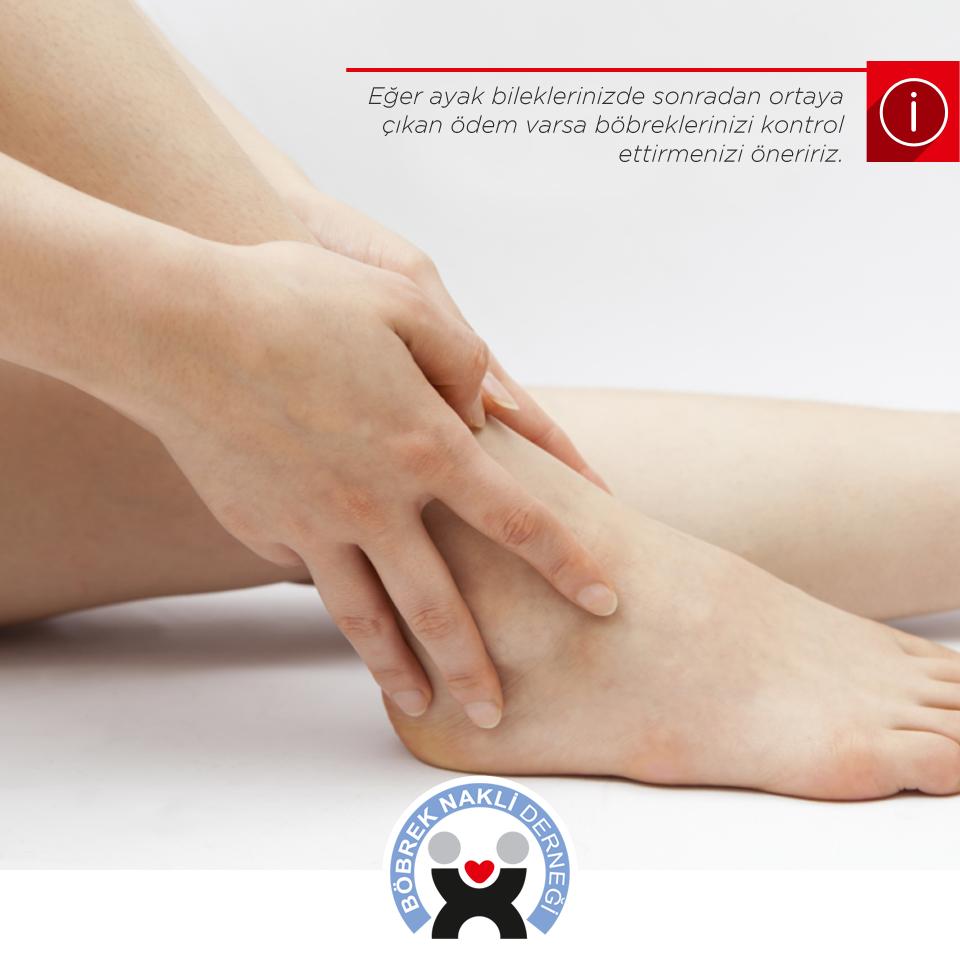 If you are experiencing symptoms of ringworm or are concerned about a new or worsening rash, then call your dermatologist today to schedule an appointment.
If you are experiencing symptoms of ringworm or are concerned about a new or worsening rash, then call your dermatologist today to schedule an appointment.
Ringworm (Tinea Corporis) Condition, Treatments, and Pictures for Parents – Overview
52396
33
Information for
ChildAdultTeen
caption goes here…
Images of Tinea Corporis (Ringworm of Body)
Overview
Tinea infections are commonly called ringworm because some may form a ring-like pattern on affected areas of the body. Tinea corporis, also known as ringworm of the body, tinea circinata, or simply as ringworm, is a surface (superficial) fungal infection of the skin. Ringworm may be passed to humans by direct contact with infected people, infected animals (such as kittens or puppies), contaminated objects (such as towels or locker room floors), or the soil.
There are several kinds of ringworm, including:
- Majocchi’s granuloma, a deeper fungal infection of skin, hair, and hair follicles.
 It is most common in women who shave their legs.
It is most common in women who shave their legs. - Tinea corporis gladiatorum, a special name given to ringworm spread by skin-to-skin contact between wrestlers.
- Tinea imbricata, a form of ringworm seen in Central and South America, Asia, and the South Pacific.
Who’s at risk?
Ringworm may occur in people of all ages, of all races, and of both sexes.
Ringworm is most commonly seen in children. Other people who are more likely to develop ringworm include:
- Women of child-bearing age who come into contact with infected children.
- People who have another tinea infection elsewhere on their bodies: tinea capitis (scalp), tinea faciei (face), tinea barbae (beard area), tinea cruris (groin), tinea pedis (feet), or tinea unguium (fingernails or toenails).
- Athletes, especially those involved in contact sports.
- People in frequent contact with animals, especially cats, dogs, horses, and cattle.
- People with weakened immune systems.

- People who sweat heavily.
- People who live in warmer, more humid climates.
Signs and Symptoms
The most common locations for ringworm include:
- Neck
- Trunk (chest, abdomen, back)
- Arms
- Legs
Ringworm appears as one or more red, scaly patches ranging in size from 1–10 cm. The border of the affected skin may be raised and may contain bumps, blisters, or scabs. Often, the central portion of the lesion is clear, leading to a ring-like shape and the descriptive name ringworm (a misnomer since the condition is not caused by a worm).
Ringworm may cause itching or burning, especially in people with weak immune systems.
Self-Care Guidelines
If you suspect that your child has ringworm, you might try one of the following over-the-counter antifungal creams or lotions:
- Terbinafine
- Clotrimazole
- Miconazole
Apply the cream to each lesion and to the normal-appearing skin 2 cm beyond the border of the affected skin for at least 2 weeks until the areas are completely clear of lesions.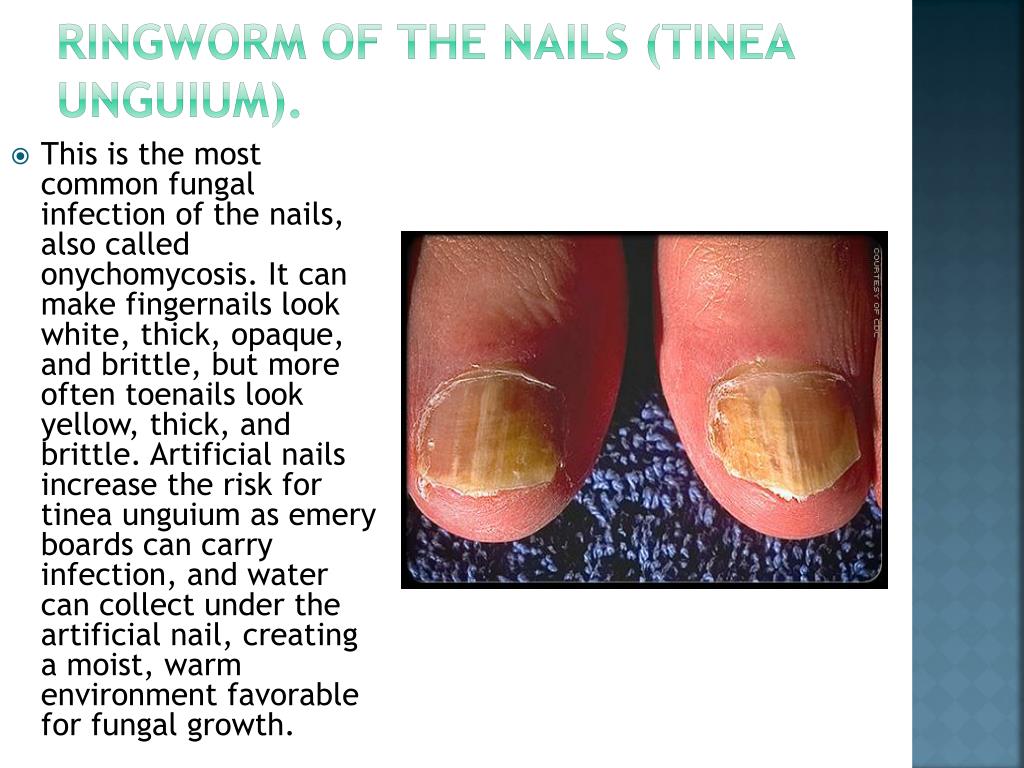 Because ringworm is very contagious, have your child avoid contact sports until lesions have been treated for a minimum of 48 hours. Do not allow your child to share towels, hats, or clothing with others until the lesions are healed.
Because ringworm is very contagious, have your child avoid contact sports until lesions have been treated for a minimum of 48 hours. Do not allow your child to share towels, hats, or clothing with others until the lesions are healed.
Since people often have tinea infections on more than one body part, examine your child for other ringworm infections, such as on the face (tinea faciei), in the groin (tinea cruris, jock itch), or on the feet (tinea pedis, athlete’s foot).
Have any household pets evaluated by a veterinarian to make sure that they do not have a dermatophyte infection. If the veterinarian discovers an infection, be sure to have the animal treated.
When to Seek Medical Care
If large areas of the body are affected, or if the lesions do not improve after 1–2 weeks of applying over-the-counter antifungal creams, see your child’s doctor for an evaluation.
Treatments Your Physician May Prescribe
In order to confirm the diagnosis of ringworm, your child’s physician might scrape some surface skin material (scales) onto a slide and examine them under a microscope. This procedure, called a KOH (potassium hydroxide) preparation, allows the doctor to look for tell-tale signs of fungal infection.
This procedure, called a KOH (potassium hydroxide) preparation, allows the doctor to look for tell-tale signs of fungal infection.
Once the diagnosis of ringworm has been confirmed, the physician will probably start treatment with an antifungal medication. Most infections can be treated with topical creams and lotions, including:
- Terbinafine
- Clotrimazole
- Miconazole
- Econazole
- Oxiconazole
- Ciclopirox
- Ketoconazole
- Sulconazole
- Naftifine
- Butenafine
Rarely, more extensive infections or those not improving with topical antifungal medications may require 3–4 weeks of treatment with oral antifungal pills or syrups, including:
The ringworm should go away within 4–6 weeks after using effective treatment.
Trusted Links
Clinical Information and Differential Diagnosis of Tinea Corporis (Ringworm of Body)
References
Bolognia, Jean L.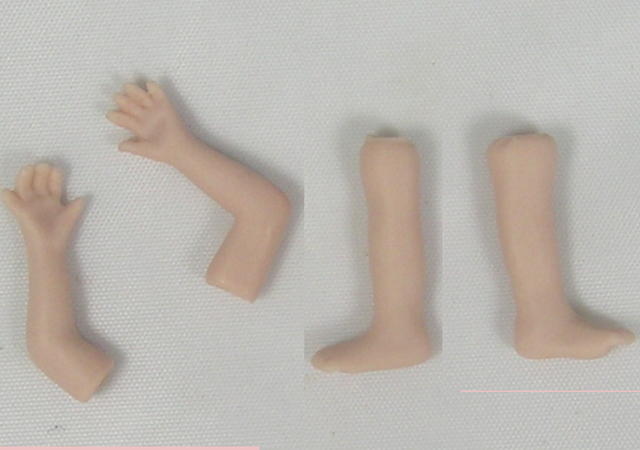 , ed. Dermatology, pp.1174-1185. New York: Mosby, 2003.
, ed. Dermatology, pp.1174-1185. New York: Mosby, 2003.
Freedberg, Irwin M., ed. Fitzpatrick’s Dermatology in General Medicine. 6th ed. pp.1997-1998, 2239-2243. New York: McGraw-Hill, 2003.
Tinea Infections: Athlete’s Foot, Jock Itch and Ringworm
Please note: This information was current at the time of publication. But medical information is always changing, and some information given here may be out of date. For regularly updated information on a variety of health topics, please visit familydoctor.org, the AAFP patient education website.
Information from Your Family Doctor
Am Fam Physician. 1998 Jul 1;58(1):177-178.
See related article on tinea infections.
What is tinea?
Tinea is a fungus that can grow on your skin, hair or nails. As it grows, it spreads out in a circle, leaving normal-appearing skin in the middle. This makes it look like a ring.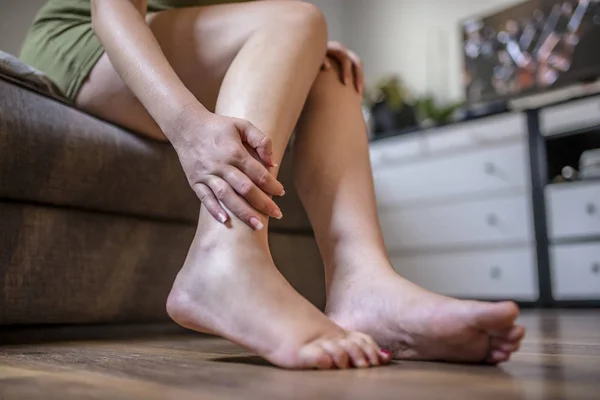 At the edge of the ring, the skin is lifted up by the irritation and looks red and scaly. To some people, the infection looks like a “worm” is under the skin. Because of the way it looks, tinea infection is often called “ringworm.” There really isn’t a worm under the skin, though.
At the edge of the ring, the skin is lifted up by the irritation and looks red and scaly. To some people, the infection looks like a “worm” is under the skin. Because of the way it looks, tinea infection is often called “ringworm.” There really isn’t a worm under the skin, though.
How did I get tinea?
One of every five persons gets a fungus infection at some time. You can get a fungus infection by touching a person who has one. Some kinds of fungus live on damp surfaces, like the floors in public showers or locker rooms. You can easily pick up a fungus there. You can even catch a fungus infection from one of your pets. Dogs and cats, as well as farm animals, can be infected with a fungus. Often this infection looks like a patch of skin where fur is missing.
What areas of the body are affected by tinea infections?
Fungus infections are named for the part of the body they infect. Tinea corporis is a fungus infection of the skin on the body (corporis is the Latin word for body). If you have this infection, you may see small, red spots that grow into large rings almost anywhere on your arms, legs or chest.
If you have this infection, you may see small, red spots that grow into large rings almost anywhere on your arms, legs or chest.
Tinea pedis is usually called “athlete’s foot.” (Pedis is a Latin word for foot.) The moist skin between your toes is a perfect place for a fungus to grow. The skin can become itchy and red, with a white, wet surface. The infection may spread to the toenails (this is called tinea unguium—unguium comes from the Latin word for nail). Here it causes the toenails to become thick and crumbly. It can also spread to your hands and fingernails.
When a fungus grows in the moist, warm area of the groin, the rash is called tinea cruris. (Cruris comes from the Latin for leg.) The common name for this infection is “jock itch.” Tinea cruris often occurs in men, especially if they often wear athletic equipment.
Tinea capitis, which is usually called “ringworm,” causes itchy, red areas, usually on the head (capitis comes from the Latin for head). The hair is destroyed, leaving bald patches.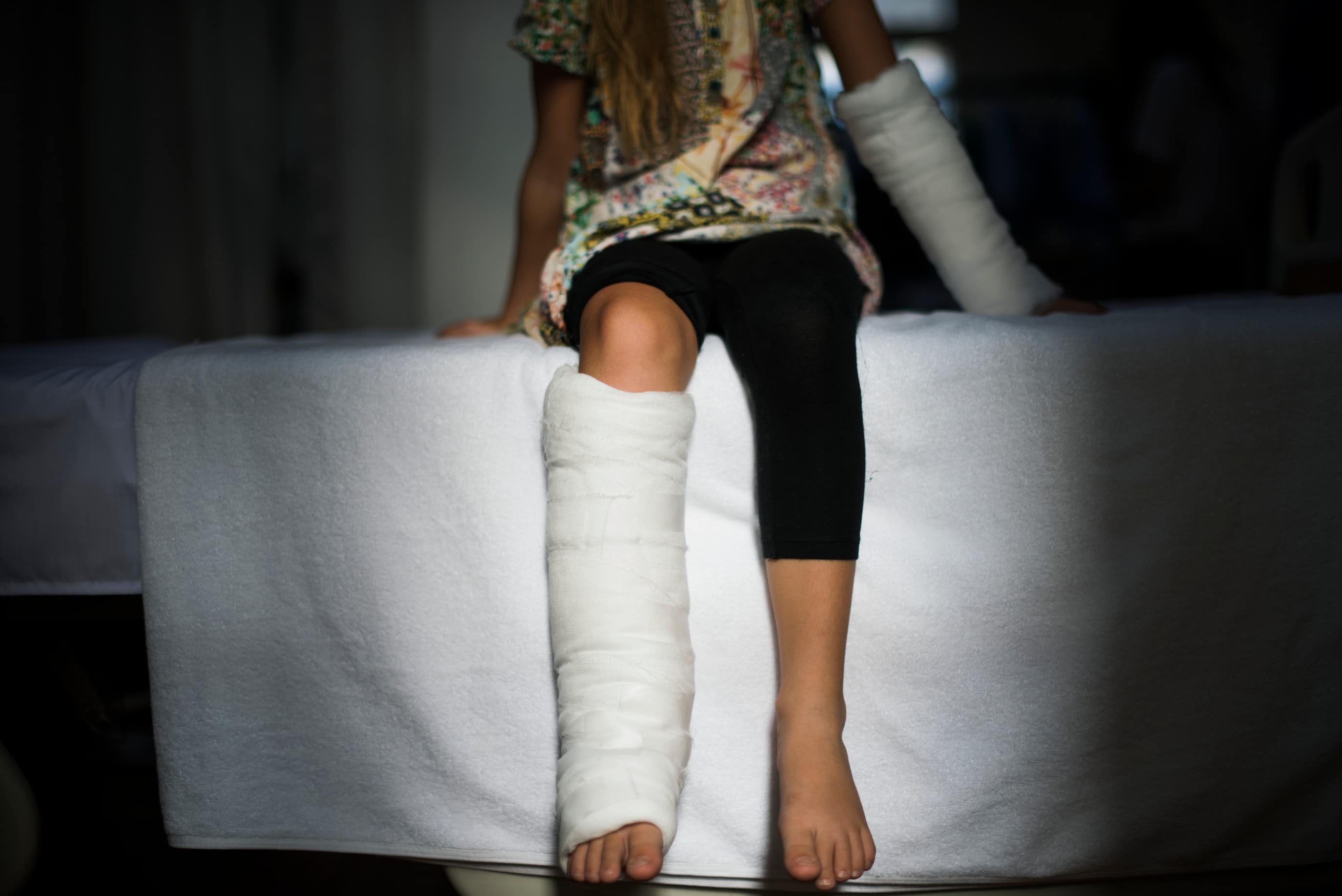 This tinea infection is most common in children.
This tinea infection is most common in children.
How do I know if I have a fungus infection?
The best way to know for sure is to ask your doctor. Other skin problems can look just like ringworm but have very different treatments. To help decide what is causing your rash, your doctor may scrape a small amount of the irritated skin onto a glass slide (or clip off a piece of nail or hair) and then examine the skin, nail or hair under a microscope. After doing this, your doctor will usually be able to tell if your skin problem is caused by a fungus.
Sometimes a piece of skin, hair or nail is sent to a laboratory to grow the fungus in a test tube. This is another way the laboratory can tell if your skin problem is caused by a fungus. They can also find out the exact type of fungus. This process takes a while because a fungus grows slowly.
How do I get rid of tinea?
Once your doctor decides that you have a fungus infection, different medicines can be used to get rid of it.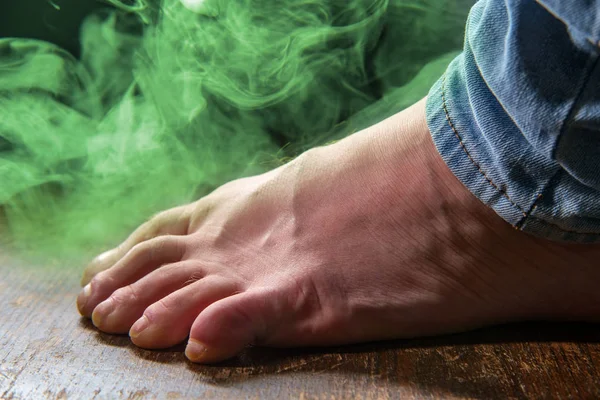 You may only need to put a special cream on the rash for a few weeks. This is especially true with jock itch.
You may only need to put a special cream on the rash for a few weeks. This is especially true with jock itch.
It can be harder to get rid of fungus infections on other parts of the body. Sometimes you have to take medicine by mouth. This medicine usually has to be taken for a long time, maybe even for months. Some fungus medicines can have unpleasant effects on the rest of your body, especially if you’re also taking other medicines. There are some newer fungus medicines that seem to work better with fewer side effects. You may need to have blood tests to make sure that your body is not having a bad reaction to the fungus medicine. It may take a few months or more to get better. Irritated skin takes time to heal. New hair or nails will have to grow back.
What can I do to prevent tinea infections?
Skin that is kept clean and dry is your best defense. However, you’re also less likely to get a tinea infection if you do the following things:
When you’re at home, take your shoes off and expose your feet to the air.

Change your socks and underwear every day, especially in warm weather.
Dry your feet carefully (especially between the toes) after using a locker room or public shower.
Avoid walking barefoot in public areas. Instead, wear “flip-flops,” sandals or water shoes.
Try not to wear thick clothing for long periods of time in warm weather.
This makes you sweat more.
Throw away worn-out exercise shoes. Never borrow other people’s shoes.
Check your pets for areas of hair loss. Ask your veterinarian to check them too. It’s important to check pets carefully, because if you don’t find out what is causing your fungus infection, you may get it again, even after treatment.
Can tinea cause serious illness?
A fungus rarely spreads below the surface of the body. Your body usually prevents this. People with weak immune systems, like people with AIDS, may have a hard time getting well from a fungus infection, but they don’t usually have problems with ringworm. Tinea infections usually don’t leave scars after the fungus is gone. A lot of people don’t even know they have a fungus infection and get better without any treatment.
Tinea infections usually don’t leave scars after the fungus is gone. A lot of people don’t even know they have a fungus infection and get better without any treatment.
Getting to the Root of Ringworm Causes and Prevention
I often use my daughter’s childhood ailments as blog topics, but this topic, a type of fungal infection, is something I have experienced personally. The infection is itchy and uncomfortable—Ringworm!
What is ringworm?
Did you know that ringworm is not actually caused by a worm? It’s a common fungal infection in school-age children. The reason it’s called ringworm is because the fungal infection forms a circle of red scaly skin—similar to how a worm looks when it touches end to end. As humans, we have many bacteria and fungi that live on our skin; some are useful and others can cause infections. The bacteria that cause ringworm are not the good kind. Continue reading to learn about signs, symptoms, diagnosis and prevention. The scientific name for ringworm is tinea.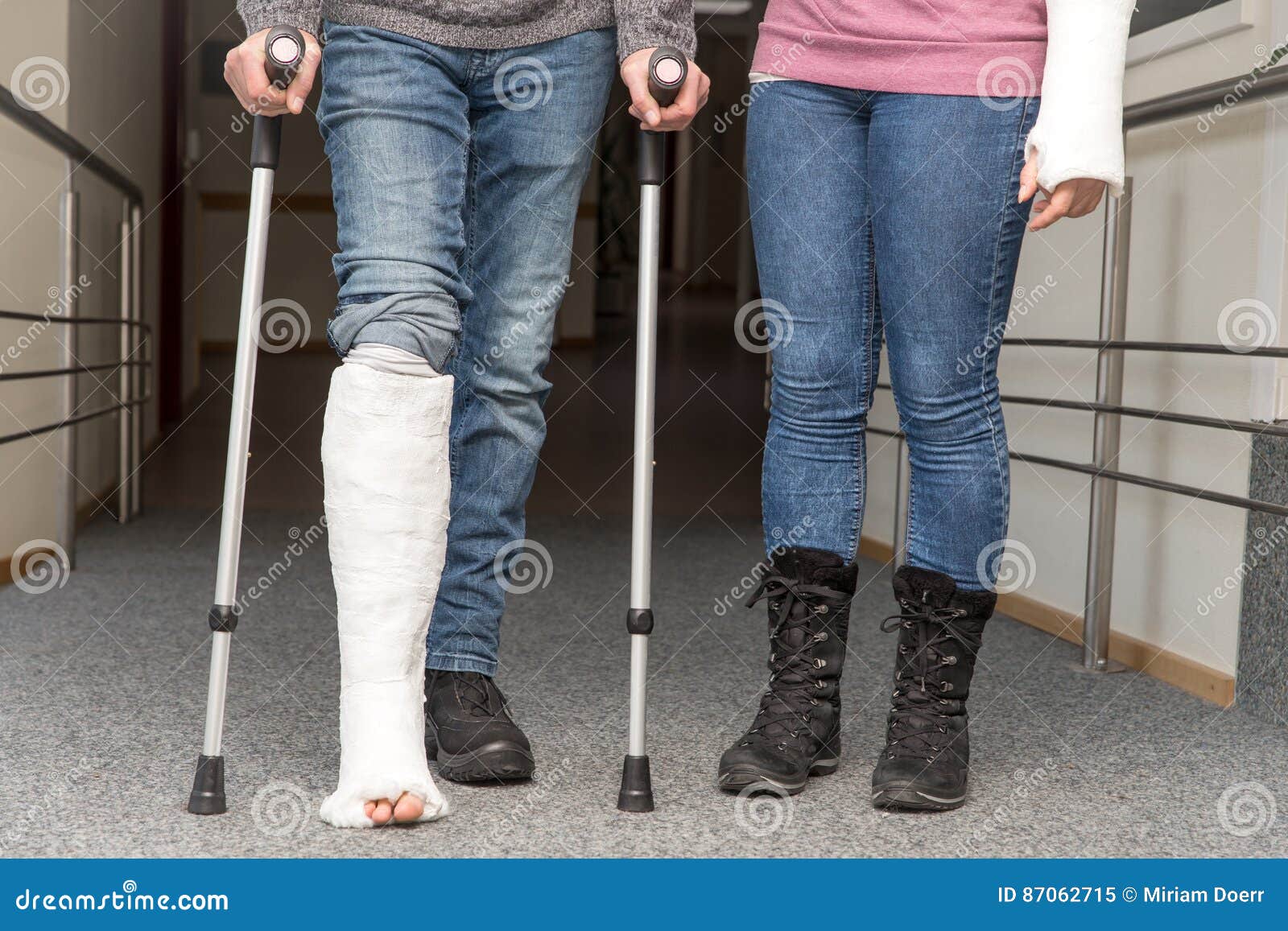 The condition can also be named for where it occurs on your child’s body.
The condition can also be named for where it occurs on your child’s body.
- Ringworm on your child’s scalp—tinea capitus
- Ringworm on your child’s body—tinea corporis
- Ringworm on your child’s feet or hands—tinea pedis or manus
The condition is caused by skin fungi called dermatophytes, which live on top of skin and typically do not invade deep inside the skin. Additioanlly, dermatophytes do not live inside the mouth. A person can have the fungus on several areas of the body at the same time.
What are ringworm signs and symptoms?
- Itchy and unpleasant sensation on your child’s skin
- Raised, red patches that can blister or ooze
- Scaly, crusted rash (does not always need to be a circular shape)
- Sharply defined edges, sometimes darker around the edge
Ringworm is very contagious and spreads easily from person to person. Other ways it can spread include:
- Pets, especially cats and dogs—your child can actually give your pet ringworm, and vice versa.

- Playing in soil.
What are the types of ringworm?
There are five types of ringworm:
- Tinea barbea, which is found on the bearded area of the face in adolescent and adult males. It is also called “barber’s itch.” It is red and scaly with borders that are not clearly defined.
- Tinea capitis, which is found on the scalp, usually in late childhood and teenagers. This will usually leave bald spots.
- Tinea corporis, which is the rash on the skin that is often but not always ring-like. It can have an active reddened border that grows.
- Tinea cruris, which is found in the groin area and is usually reddish-brown. This is also known as “jock itch.” It can mimic yeast infections, psoriasis or just chafing from tight clothing.
- Tinea manus or pedis, which is found on the hands or feet and shows up often in the spaces between the fingers and toes. It can cause thickening, itchy, scaling, red and itchy skin. It can also be on the heels or soles of the feet.
 Nails can be thickened, discolored, brittle and crumbly.
Nails can be thickened, discolored, brittle and crumbly.
How is ringworm diagnosed and treated?
If you feel your child has ringworm, contact their pediatrician for proper diagnosis and treatment. Treatment may involve an antifungal cream. If the rash does not heal with the cream, your child’s pediatrician may prescribe medicine to be taken by mouth. During treatment, be sure to keep the child clean and dry and wash all clothes, bed sheets and towels every day. Following the pediatrician’s treatment regimen is important because ringworm can get worse and make your child very sick with a widespread fungal infection. If your child’s ringworm is worsening, he or she will have these signs and symptoms:
- Fever
- Pus or drainage
- Rash is warm to the touch
- Red streaks
- Swelling
- Worsening and spreading redness
How can I prevent ringworm in my child?
Proper hand washing and skin care is important in preventing ringworm.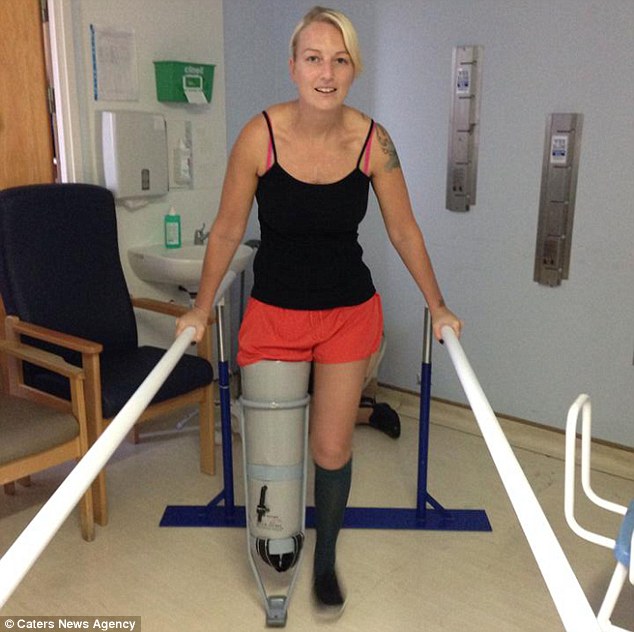 Remind your child to wash their hand frequently with running water, soap and plenty of friction. Other ways to prevent ringworm:
Remind your child to wash their hand frequently with running water, soap and plenty of friction. Other ways to prevent ringworm:
- Encourage your child not to share clothing, towels, hair brushes and accessories, combs or other personal items with others.
- Encourage your child to wear sandals in locker rooms or around a pool.
- Wash your child’s sports clothing, towels and linen regularly.
- Keep your child’s skin clean and dry.
- If your child complains of itchiness, inspect their skin daily for signs of ringworm.
- Shampoo your child’s hair regularly.
- Don’t dress your child in tight clothing.
- Remind your child not to touch bald or itchy spots on pets.
- Take your pet to the veterinarian if they contract ringworm. This will help avoid your pet from spreading the condition to the rest of the family and other pets.
The information in this blog post can help protect you and your family from ringworm and promote skin health.:max_bytes(150000):strip_icc()/ringworm_symptoms-5ae1f3c4a474be00366fef35.png) Our skin is our biggest organ and our best protection!
Our skin is our biggest organ and our best protection!
Many thanks to Terry Renteria, RN, wound ostomy and continence nurse (WOCN) specialist at Children’s Hospital Los Angeles for her advisement of this RN Remedies blog post.
Learn more Health and Safety Tips
Related Content
Ringworm: Signs, Symptoms, and Complications
Ringworm causes a raised, red, scaly rash that typically forms in circular or ring-shaped patches. In certain areas, though, ringworm may not show up in the classic ring. In places like the scalp, hands and feet, groin, or beard area, ringworm may simply cause a scaly, itchy rash without the circular shape.
Knowing which signs and symptoms of ringworm to look for will help you seek proper diagnosis and treatment.
© Verywell, 2018
Frequent Symptoms
Anyone can get ringworm, but it’s particularly common in children.
Ringworm symptoms can vary depending on the affected region of the body, which spans from your head to your toes. Ringworm rashes on the stomach can look very different compared to ringworm on the scalp, for example.
Ringworm rashes on the stomach can look very different compared to ringworm on the scalp, for example.
In all areas, the first sign of ringworm is often a small, red, scaly area of skin. Just before the rash appears, you may feel some minor burning or itching. Ringworm is generally red, but the rash may be brown or grey in color.
Ringworm of the Body (Tinea Corporis)
DermNet / CC BY-NC-ND
You get the typical, ring-shaped ringworm rash on the trunk, arms, and legs. First, you’ll find a small, scaly area on the skin that itches. The scaly area progresses quickly to form a slightly raised, ring-shaped rash. As the rash spreads, the rings grow in diameter. The skin inside the ring may be clear and appear normal or have red and flaky patches. Sometimes the rash resembles a bullseye. As the rash progresses small blisters can form, causing oozing and crusting.
The rings aren’t always circular; they can also grow in an irregular shape.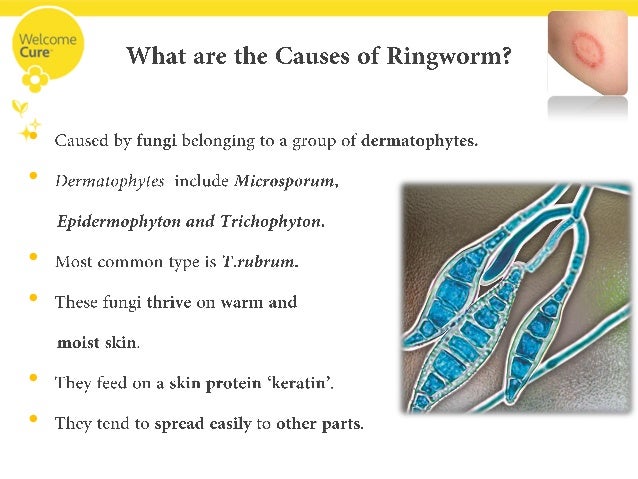 You may have just one ring or several. They can be separate or overlap.
You may have just one ring or several. They can be separate or overlap.
Ringworm of the Face (Tinea Faciei)
Ringworm on the face can take on the classic ring-shaped rash, but not always. Instead, you may just notice raised, red, scaly patches that itch.
Ringworm in the Beard Area (Tinea Barbae)
For men, ringworm can also appear in the beard area. Ringworm in the beard area causes crusty, flaky areas of skin. The hair can break or fall out, causing bald patches in the beard. Ringworm here often forms bumps and blisters that can be confused with acne or folliculitis.
Ringworm of the Scalp (Tinera Capitis)
On the scalp, you won’t likely notice a ring. Instead, you’ll have flaky, itchy patches. These patches can be red, silvery grey, or crusty yellow. Your hair can get brittle and break or fall out easily. Very often it causes bald patches. Scalp ringworm is fairly common in toddlers and school-aged children.
Ringworm of the Feet AKA “Athlete’s Foot” (Tinea Pedis)
DermNet / CC BY-NC-ND
Athlete’s foot is caused by the same group of fungi, dermatophytes, that cause ringworm. Instead of a ring-shaped rash, you’ll get dry, peeling, itchy skin, especially between the toes. Your feet might burn or sting. After a while, the sole of your foot may thicken like a callus. Athlete’s foot is common in teens and adults, but rare before adolescence.
Ringworm in the Groin Area AKA “Jock Itch” (Tinea Cruris)
Like athlete’s foot, jock itch is caused by the same group of fungi that cause ringworm. Jock itch causes a red to brown rash in the creases of the skin around the groin. It can spread to thighs, buttocks, and stomach. The rash is scaly and raised. It often itches but not always. It may just feel painful. Jock itch is more common in men than women, and like athlete’s foot it is rare in children.
Ringworm of the Hands (Tinea Manus)
Ringworm can also appear on the hands.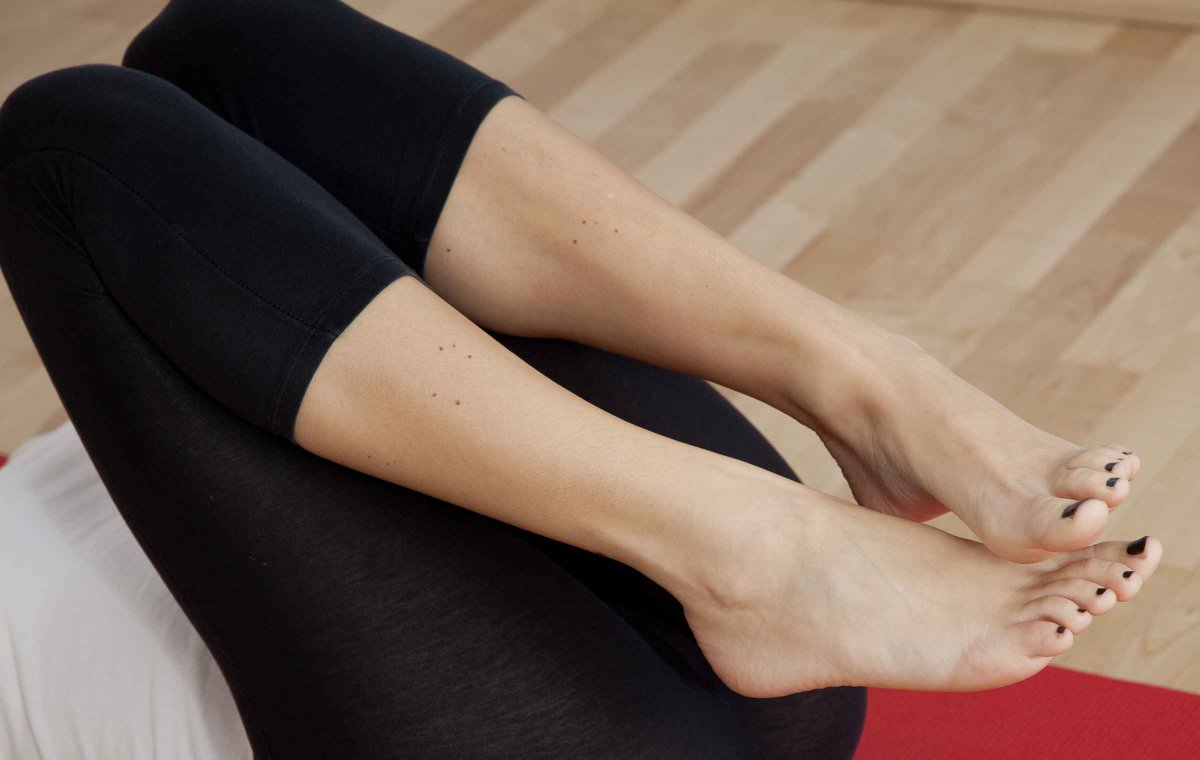 If it appears on the back of the hands, you’ll likely get the classic itchy, ring-shaped rash. On the palms and between the fingers, though, you may mistake it for dry skin because of dryness, peeling, and cracking. You may also notice thickening of the skin, like a callus, as time goes on.
If it appears on the back of the hands, you’ll likely get the classic itchy, ring-shaped rash. On the palms and between the fingers, though, you may mistake it for dry skin because of dryness, peeling, and cracking. You may also notice thickening of the skin, like a callus, as time goes on.
Ringworm of the Nails (Tinea Unguium)
Also called onychomycosis, this fungal infection can also affect the nail. It can happen in both the fingernails and the toenails, but it tends to be more common in the toes. The nails will be discolored, thickened, and brittle. They may lift off of the nail bed.
Possible Complications
Really serious complications from ringworm are extremely rare. In the vast majority of cases, it goes away quickly with treatment.
Spreading
The biggest complication to look for is spreading to other areas of your body. Ringworm can be easily spread by touching infected spots and then touching other areas of your skin.
Dark Marks
After ringworm has healed, some people may have a dark mark left where the rash was. This is called post-inflammatory hyperpigmentation. These marks can happen after an inflammatory wound, like a ringworm rash, has healed. Some people are more prone to developing post-inflammatory hyperpigmentation and it’s more common in those with dark complexions.
Secondary Infections
Secondary bacterial infections can also happen if bacteria invade broken skin. They can be more common in children because they are more likely to give in to scratching, breaking the skin and allowing opportunistic bacteria to take hold. Signs of a secondary bacterial infection include redness, pain, swelling, pimple-like bumps, heat, and oozing. If the fungal infection is left untreated in the nails for a long period of time, your nails may become misshapen.
Abscess
A type of abscess called a kerion can also develop if you are super sensitive to the fungi that cause ringworm or if it is left untreated.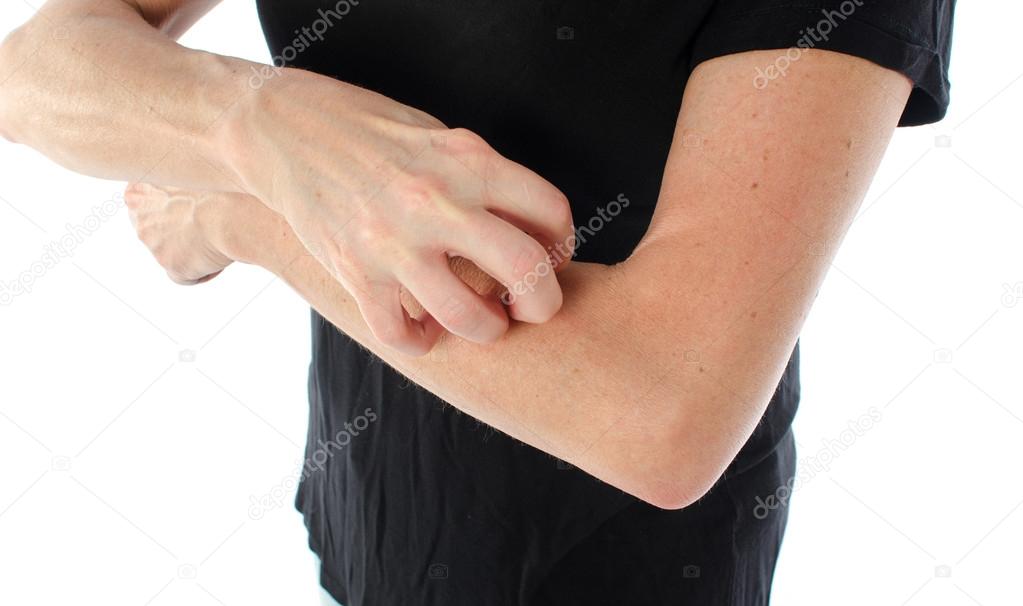 Kerions most commonly develop on the scalp but can develop anywhere you have ringworm. They are large, inflamed, pus-filled lumps. They feel mushy and typically cause bald patches where they form.
Kerions most commonly develop on the scalp but can develop anywhere you have ringworm. They are large, inflamed, pus-filled lumps. They feel mushy and typically cause bald patches where they form.
These bald patches can be temporary or permanent depending on how much damage has been done to the skin. Some people also get a fever and generally feel unwell.
Deep or Widespread Infections
Although rare, the fungi that cause ringworm can sometimes cause a deeper infection called Mojocchi granuloma. Ringworm typically affects just the surface of the skin, called the epidermis. In Mojocchi granuloma the fungus travels down the hair follicle and infects the deeper skin layers, called the dermis. Topical treatments can rarely reach these deeper areas, so oral medications are needed to treat Mojocchi granuloma.
Widespread fungal infection, where the fungus grows unchecked over large areas of the body, is extremely rare but can happen in people who have compromised immune systems—for example, if you have HIV/AIDS or are going through chemotherapy. Also, those with weakened immune systems and the elderly may have a harder time fighting ringworm infection, even with treatment.
When to See a Doctor
Ringworm isn’t a serious problem in most cases. But with certain symptoms, a doctor will be your best resource for treating ringworm as efficiently as possible, especially to avoid any future complications of the infection.
Ringworm Doctor Discussion Guide
Get our printable guide for your next doctor’s appointment to help you ask the right questions.
Email the Guide
Send to yourself or a loved one.
Sign Up
This Doctor Discussion Guide has been sent to {{form.email}}.
There was an error. Please try again.
Ringworm can easily be treated in most cases, but you don’t want to ignore it. Your physician can help you treat it.
See a Doctor If…
- You’ve used an OTC anti-fungal medication for two weeks with no improvement.
- You have ringworm on the scalp. Treating scalp ringworm as soon as possible is important to help prevent hair loss.
- You have ringworm over large areas of your body, or it’s spreading quickly.
- Your ringworm patches become infected (swollen, oozing, hot, and painful).
- You’re not sure if what you have is really ringworm. Any time you have an unidentified rash, it should be checked out by a physician.
Frequently Asked Questions
How soon do symptoms start after exposure to ringworm?
If you’re exposed to ringworm, you can expect to see a rash on your skin four to 10 days later. Ringworm of the scalp takes somewhat longer to develop—between 10 and 14 days.
What is the first sign of ringworm?
The first sign of ringworm typically is a rash. Depending on where on the body the fungus has taken hold, the rash may look different. It doesn’t always form a circular shape on the skin, for example. On the groin, the center of the rash may be reddish-brown. On the palms of the hands and bottoms of the feet, the rash is likely to resemble thickened patches of skin, while between the fingers the skin may be moist and form open sores.
What does ringworm look like on the face?
Ringworm on the face is called tinea faciei. It’s not the same as ringworm that affects the hair or beard. The rash it causes tends not to be circular, but often it has distinct borders and tends to spread. Other symptoms include itching and burning, especially if the rash is exposed to the sun. Tinea faciei also can form an fungal abscess called a kerion.
What does ringworm look like on skin of color?
A ringworm rash on dark skin will be similar in size and shape to that of a rash on light skin. It also will cause itching and scaliness. However, instead of being reddish it likely will be brown or gray.
How does ringworm change if it isn’t treated?
Ringworm doesn’t tend to get better on its own, so the symptoms are likely to worsen if it isn’t treated. Areas of hair loss on the scalp or beard can become larger, for example. Untreated ringworm can cause skin to blister and crack, leaving it open to bacterial infection. And because ringworm is highly contagious, if it isn’t managed it can spread to other parts of the body.
What conditions can be mistaken for ringworm?
Because ringworm does not always appear on flat areas of skin and take on the classic round shape, there are a variety of conditions that can cause similar symptoms as ringworm, among them:
Causes, Symptoms and Treatment Options
Medically reviewed by Drugs.com. Last updated on Feb 8, 2021.
What is Ringworm (Tinea)?
Ringworm, also called tinea, is a skin infection caused by fungi, microscopic organisms that are similar to yeast and molds. It does not have any relation to worms, but is called “ringworm” because the infection can produce ring-shaped patches on the skin that have red, wormlike edges.
Although ringworm can affect almost any area of the body, it favors places that are warm, dark and moist, such as skin in the groin area, the spaces between the toes and the deep skin folds of obese people. People can catch ringworm in several different ways, including:
- Direct skin-to-skin contact with an infected person
- Playing with, or caring for, an infected pet or farm animal
- Using an infected person’s clothing, shoes or personal grooming items such as combs, brushes or towels
- Sharing an infected child’s toys, especially stuffed toys
- Touching a contaminated surface — Some common high-risk surfaces include floors in bathrooms, showers and locker rooms; shower stalls; gym mats; and pool decks, especially at school or community pools. In general, any surface that is used by many different people can carry ringworm, especially if the surface is also wet or damp. Even contaminated carpets and couches can spread the infection.
Depending on its specific location, tinea may be known by a more common name, such as athlete’s foot or jock itch. The various types of ringworm include:
- Ringworm of the scalp — This infection, also known as tinea capitis, causes patches of hair loss on the scalp. It is especially common among children aged 3 to 9, particularly children who live in crowded conditions in urban areas. Scalp ringworm spreads on contaminated combs, brushes, hats and pillows, and it may occur in epidemics in schools and day-care centers.
- Barber’s itch (ringworm of the beard) — This fungal infection affects bearded areas of the face and neck in adult men.
- Ringworm of the body — Ringworm of the body, also known as tinea corporis, involves the non-hairy skin of the face, trunk, arms or legs. Of all types of ringworm, tinea corporis is the one that most often produces the classic, ring-shaped patches with wormlike borders. Ringworm of the body occurs in people of all ages and races, with women affected as often as men.
- Jock itch (ringworm of the groin) — This infection, also known as tinea cruris, typically causes itchy, scaly, red patches of skin on the groin area. It most often affects teenage and adult men, especially those who are obese, or who wear tight-fitting underwear. It is the most common type of tinea.
- Athlete’s foot (ringworm of the foot) — Athlete’s foot, also known as tinea pedis, is the second most common form of tinea. In some people, fungus also attacks the toenails. People often get athlete’s foot by walking barefoot on contaminated floors, especially in gyms and locker rooms.
Doctors estimate that at least 20% of all people will develop tinea at some time during life. People who are more likely to get a fungal skin infection include:
- People who live in hot, humid climates
- Athletes, especially swimmers
- Children in day care
- People who work with animals
- Obese people with deep, moist skin folds
- Anyone whose immune defenses are weakened by illness (HIV, organ transplant, some cancers) or by medications.
Symptoms
Symptoms of ringworm vary, depending on the site of the infection:
- Ringworm of the scalp — Symptoms can include a diffuse, itchy, scaling of the scalp that resembles dandruff; itchy, scaly, round patches of hair loss on the scalp; black-dot ringworm, in which stubs of broken hairs form a dotted pattern on the scalp; or kerion, a thick, nodular patch of inflamed skin that may ooze pus.
- Barber’s itch — Symptoms often include kerion and crusted skin on bearded areas of the face and neck.
- Ringworm of the body — This infection causes itchy, red, scaly, round patches with a raised border. Individual patches may be large or small and may occur alone or in groups of three to four.
- Jock itch — Jock itch causes red, scaly patches that may itch or burn. These patches usually occur on the groin area and upper thigh, but not on the penis or scrotum.
- Athlete’s foot — Athlete’s foot produces areas of redness, scaling or cracked skin on the feet, especially between the toes. The affected skin may itch or burn, and the feet may have a strong odor.
Diagnosis
The best way for your doctor to diagnose any type of fungal infection in the skin is by scraping the area, and looking at the specimen under a microscope to see if it contains fungi. He or she also can determine if you have ringworm by the way it looks. Although you may be able to diagnose yourself, you should call your doctor before you use over-the-counter treatment. Your doctor will ask you questions about your lifestyle, including whether you are athletic and routinely walk barefoot in pool or locker room areas; live or work in crowded conditions; share clothing, shoes, towels or grooming items; or have been exposed recently to someone with symptoms of ringworm.
If your symptoms involve the scalp or beard, you should be seen by a doctor before attempting any treatment.
Expected Duration
With proper treatment, both jock itch and ringworm of the body usually improve within one to two weeks. Ringworm of the scalp or beard may take a few weeks longer. However, athlete’s foot can be a chronic (long-lasting) problem that comes and goes over many years. This can be caused in part by an active lifestyle that keeps the feet moist and sweaty.
Prevention
To help prevent tinea, try the following suggestions:
- Avoid sharing anyone else’s clothing, shoes, towels or personal-grooming items (hairbrushes, combs, makeup brushes).
- If your child goes to sleepover parties, provide a sleeping bag, pillow and blanket from home.
- Bathe regularly and dry your skin thoroughly afterwards. Be especially careful to dry the area between your toes and under your breasts.
- Wear clean socks and underwear every day. When possible, choose absorbent cotton socks and underwear rather than synthetic fabrics. At the gym, keep an extra pair of socks in your locker to replace sweaty socks after a workout.
- Wear sandals, flip-flops, shower shoes or other protective footwear when you walk through locker rooms or shower rooms or near pools.
- If you care for a pet or farm animal that develops areas of hair loss or scaly patches, take the animal to a veterinarian for a checkup.
Treatment
If you have jock itch, athlete’s foot or ringworm of the body, you usually can be treated with a nonprescription antifungal cream, lotion or powder. Your doctor can recommend the appropriate treatment for your condition. Some of the nonprescription medications available include terbinafine (Lamisil), tolnaftate (Tinactin), miconazole (Micatin and other brand names), clotrimazole (Lotrimin, Mycelex) and undecylenic acid (Desenex and other brand names). Be sure to follow the directions carefully when you apply the medication. If your symptoms do not improve significantly after you have used a nonprescription medicine for about two weeks, call your doctor. Your doctor may suggest a prescription antifungal medication that will cure the problem. For extremely stubborn infections, the antifungal medication may be taken by mouth rather than being applied to the skin.
If you have a fungal infection of the scalp, beard, fingernails, or toenails, your doctor may treat you with an oral antifungal medication, such as oral terbinafine (Lamisil), itraconazole (Sporanox) or griseofulvin (Grisactin and other brand names). You also will have to apply antifungal creams or shampoos to your hair and scalp. Complete treatment can take two or three months.
When To Call A Professional
Make an appointment to see your doctor if you have symptoms of ringworm that involve the scalp or beard. Ringworm can sometimes be confused with other skin problems. If in doubt, see your doctor for a correct diagnosis.
If your immune system is weakened by illness or medication, contact your doctor promptly whenever you develop any unusual skin symptoms. In particular, people with diabetes should have skin symptoms, especially on the feet, checked as soon as possible.
Prognosis
Although treatment may take several weeks, antifungal medication almost always cures ringworm infections. Hair eventually regrows, and scarring is rare.
However, people do not develop immunity to tinea. Because it is possible to catch the fungus again, follow the suggestions outlined in the Prevention section above to avoid getting infected again.
Learn more about Ringworm (Tinea)
Associated drugs
IBM Watson Micromedex
External resources
Centers for Disease Control and Prevention (CDC)
http://www.cdc.gov/
National Institute of Allergy and Infectious Diseases (NIAID)
http://www.niaid.nih.gov/
National Institute of Arthritis and Musculoskeletal and Skin Diseases
http://www.niams.nih.gov/
American Academy of Dermatology
http://www.aad.org/
American Academy of Family Physicians (AAFP)
http://www.familydoctor.org/
Further information
Always consult your healthcare provider to ensure the information displayed on this page applies to your personal circumstances.
Medical Disclaimer
Ringworm (for Parents) – Nemours Kidshealth
What Is Ringworm?
Ringworm is a type of fungal skin infection. Fungi (the plural of fungus) are microscopic plant-like organisms that thrive in damp, warm environments. They’re usually not dangerous, but sometimes can cause disease. When they infect the skin, they cause mild but annoying rashes. Fungal skin infections are also known as tinea infections.
When fungus grows in the area of the groin, upper thighs, and buttocks, it is called jock itch. When it grows on the feet, it is called athlete’s foot.
But when fungus grows anywhere else on the body, it’s known as ringworm. Its medical name is tinea capitis when it’s on the scalp, and tinea corporis when it’s on the rest of the body. On the nails it is known as onychomycosis.
What Are the Signs & Symptoms of Ringworm?
Ringworm on the skin starts as a red, scaly patch or bump. Over time, it may look like one or more rings with raised, bumpy, scaly borders (the center is often clear). This ring pattern gave ringworm its name, but not every infected person has it. The skin may flake, peel, or crack, and it can itch, sting, burn, or feel uncomfortable.
Ringworm on the scalp may start as a small sore that looks like a pimple before becoming patchy, flaky, or scaly. These flakes may look like dandruff. It can make some hair fall out or break into stubble, leaving a bald spot. It also can make the scalp swollen, tender, and red.
Sometimes, it causes a pus-filled mass known as a kerion, which can be confused with impetigo or cellulitis (bacterial infections). When the scalp is infected, it can cause swollen lymph nodes at the back of the head or neck.
Ringworm on the nails may affect one or more nails on the hands or feet. The nails may become thick, white or yellowish, and brittle.
What Causes Ringworm?
Ringworm is caused by fungi that normally live on the skin, hair, and nails called dermatophytes. When the environment they live in gets warm and moist, they grow out of control and start to cause symptoms.
Is Ringworm Contagious?
Yes. Ringworm can spread:
- from one person to another by skin-to-skin contact, especially in warm, damp environments
- to other areas of the body if a person touches the affected area and then touches other body parts, such as the hands
- from animals to people
How Do People Get Ringworm?
Besides spreading from person to person, ringworm can come from pets or other animals (usually cats, dogs, or rodents). It thrives in warm, moist environments such as public showers, locker rooms, or pool areas and can spread when people are in close physical contact. That’s why it’s common in people who play contact sports such as wrestling. It can also be passed on objects like combs, brushes, hats, towels, or clothing.
Minor skin injuries (such as scratches), too much exposure to heat and humidity, and some health conditions (such as diabetes, obesity, or immune system problems) can make a person more likely to develop it.
How Is Ringworm Diagnosed?
A doctor can often diagnose ringworm just by looking at it and asking questions about the symptoms and the child’s lifestyle. Sometimes the doctor will scrape off a small sample of the flaky infected skin to look at under a microscope or to test in a laboratory.
How Is Ringworm Treated?
Using over-the-counter (OTC) antifungal creams, sprays, or powders may solve a mild infection. More serious infections may need prescription medicine, either topical (put on skin) or in pill/syrup form.
Ringworm on the nails or scalp usually is treated with medicine taken by mouth for 1 to 3 months. An antifungal shampoo prescribed by the doctor can help prevent the spread to other people.
Your child should use the medicine as long as is recommended, even if the rash seems to be getting better. If not, the infection can come back and spread to other parts of the body.
To help heal the skin, it’s important to keep the affected area clean and dry. Your child should:
- Wash and then dry the area with a clean towel. (A separate clean towel should be used for the rest of the body.)
- Apply the antifungal cream, powder, or spray as directed on the label.
- Change clothing every day.
- Treat any other fungal infections, such as athlete’s foot.
How Long Does Ringworm Last?
Most mild cases of ringworm usually clear up in 2 to 4 weeks. But treatment might be needed for up to 3 months if the infection is more serious, or affects the nails or the scalp.
Can Ringworm Be Prevented?
Ringworm can often be prevented. To avoid it, kids and teens should:
- Keep their skin clean and dry, by washing daily and drying completely, particularly after showering, swimming, and sweaty activities.
- Use clean towels and avoid sharing clothing, towels, combs, brushes, and hats.
- Wash sports gear and uniforms as often as possible and don’t share them.
- Avoid tight-fitting clothing.
- Change clothing every day.
- Wash hands well with soap and water after playing with pets.
- Treat any other fungal infections, such as athlete’s foot.
how to treat at home and how not to get infected
We discussed the treatment of different options for lichen with therapist, endoscopist, head of the organizational and methodological office Lydia Golubenko .
In general, the treatment of patients with different types of lichen will be given in four main directions.
The first is etiotropic therapy (that is, drugs aimed at the cause of the disease): for ringworm and pityriasis, these are antifungal drugs (fungicides), with shingles, antiviral (Acyclovir drugs).
The second is the elimination of the symptoms of the disease due to various medications: they are taken orally or applied topically.
Third – various non-drug measures (UV therapy, skin care, physiotherapy, strengthening the immune defense).
And the fourth (this item is not always needed) – disinfection in the hearth (for clothes, linen and home).
The drugs that are most often used in the treatment of different types of lichen are:
- antifungal creams, ointments or tablets;
- antiviral injections, tablets or topical agents;
- Antihistamines for itching and topical gels;
- vitamin and mineral complexes, adaptogens.
Antidepressants may be needed if there are accompanying signs of depressive disorders (eg, when large areas of the body are affected). Sometimes we can recommend sedatives, as well as sleeping pills, if people don’t sleep well due to itching and anxiety. If the inflammation is acute, the skin is severely affected, a short course of corticosteroid medications may be needed, but strictly under the supervision of a physician to prevent side effects.
Some features of treatment depend on the type of lichen.With ringworm, shaving off the hair in the affected area is highly recommended, especially against the background of large bald patches that have appeared. This will help treat the skin more effectively and quickly eliminate the fungus. If the stain is the only one, the hair can be neatly cut around, but if there are a lot of them, it is better to remove all of them.
If this is a treatment for lichen planus, the use of drugs against malaria, drugs from the retinoid groups, may be recommended to all the above measures. They have shown their effectiveness.
If it is herpes zoster, it is important to complete the full course of Acyclovir, as well as additionally use anesthetic drugs and prevent platelet adhesion (antiplatelet agents). It is equally important to consult an immunologist, prescribe drugs to stimulate immunity.
Deprive what kind of disease, symptoms, diagnosis, treatment
Lichen is a generalized name for a group of various skin diseases, mainly expressed in small nodular rashes or severely itchy spots on the skin.The main danger of depriving children is the introduction of infection into the wounds that form when combing the rash.
Consult a dermatovenerologist
Do not postpone treatment
Versicolor versicolor (pityriasis)
Pathogen: yeast-like fungi Pityorosporumorbiculare, Pityorosporumovale, Malasseziafurtur. All these fungi live on human skin constantly, the disease begins when there is a sharp increase in the number of their colonies.
Causes of occurrence:
- increased sweating and sunburn during the hot season;
- hormonal disruptions;
- nervous tension, stress;
- disruption of the gastrointestinal tract.
Symptoms:
- itchy spots on the skin that are pink, coffee, or brown;
- small peeling of the skin in the area of \ u200b \ u200bthe spots.
Tinea versicolor is usually treated with topical antifungal drugs.
Pink lichen (Gibert’s disease)
The causative agent: is not known exactly.
Causes of occurrence:
- decreased immunity;
- skin damage.
Symptoms:
- the formation of a large spot of light pink color on the skin, over time this spot begins to peel off, and smaller spots appear around;
- itching in the area of spots.
Pink lichen is usually treated with antiallergic drugs. It is also important to exclude any irritation of the skin with synthetic clothing and increase immunity.
Shingles
Causative agent: varicella-zoster virus (herpesvirus). It is a contagious disease.
Causes of a person who had previously had chickenpox:
- decreased immunity;
- nervous overstrain;
- oncological diseases;
- HIV.
In addition, infection is possible through contact with a patient with shingles.
Symptoms:
- pink swollen spots on the skin;
- painful sensations in the area of \ u200b \ u200bthe spots;
- the formation of bubbles with liquid on the spots;
- increased body temperature.
When these symptoms appear, it is necessary to urgently consult a dermatologist, as complications up to motor paralysis are possible.
Treatment for shingles is symptomatic – pain relievers and corticosteroids are used, and antiviral drugs are sometimes prescribed.
Ringworm (ringworm in dogs)
Contagious fungal disease.
Causative agent: fungus Microsporumcanis.
Causes of occurrence: infection through contact with a sick animal or human ringworm
Symptoms:
- scaly oval spots;
- the appearance of bald spots on the hairy parts of the body;
- increased body temperature;
- suppuration on the spots.
Ringworm treatment is carried out with antifungal drugs and topical iodine solution.
If lichen occurs, you must consult a dermatologist who will determine the type of disease and prescribe the appropriate treatment. This will prevent the possibility of recurrence of the disease and the occurrence of complications.
Make an appointment with a dermatovenerologist
Do not postpone treatment
Why Choose American Medical Clinic?
- A team of professionals. Candidates and doctors of medical sciences, professors and associate professors of departments of leading universities, doctors of the first and highest qualification categories work in the clinic 24 hours a day, 7 days a week. We work without holidays and days off to keep you healthy and happy.
- Regular professional development. Every doctor regularly undergoes refresher courses, attends seminars, goes on internships, participates in conferences, and is trained abroad.This helps to maintain the qualifications of doctors at the highest level. Today, AMK doctors’ training allows them to train young doctors, acting as experts at European level seminars.
- Advanced technologies. We regularly invest not only in training and professional development of personnel, but also in the acquisition of the most modern equipment from leading European manufacturers.
- The value of time. The American Medical Clinic has all the conditions for a comfortable comprehensive examination and diagnosis of a patient on the day of treatment.
- Customer confidence. For 25 years of impeccable work, more than 500,000 patients have entrusted their health to us. More than 80% of patients recommend us to their family and friends.
- Warranties. We are 100% responsible for the quality of the services provided, the high level of which is confirmed by many years of experience.The attention and sensitive attitude of doctors with more than ten years of experience in medical practice give a stable positive result.
See also:
Treatment of lichen in humans at home – Phytomarket
How long does the lichen take? It depends on the type and degree of pathology. Some forms can pass on their own (for example, pink), requiring only strict hygiene, restrictions on the use of cosmetics, exclusion of mechanical contact with a washcloth, clothes, etc.but most often therapy is needed. If you do not treat lichen in a person, it can become chronic, and some species threaten with serious health problems. For example, herpes zoster is dangerous with loss of vision.
In animals
Very often, lichen is transmitted to humans from animals (zoonotic form of transmission). If you notice baldness on some part of the body, peeling, furunculosis, redness or crusting in your pet, you should urgently contact your veterinarian for an accurate diagnosis and choice of the form of treatment.
In humans
A person can “catch” lichen anywhere: in the pool, in the common shower, after communicating with a sick animal or person. In addition, some forms of the disease occur against the background of severe hypothermia. When characteristic spots appear, it is advisable to consult a doctor in order to establish an accurate diagnosis, on which the course of therapy depends. Ointments, shampoos, dusting powders, taking antimycotic drugs will help to remove lichen. If the nervous system is damaged (shingles), the doctor may prescribe mild sedatives or hypnotics, antidepressants.
Deprive on the face
Such localization is dangerous because it can leave ugly marks, scars and pigmentation. In addition, some forms of shingles affect the mucous membranes of the eyes and threaten with serious consequences for the organs of vision, up to and including blindness.
Lichen simplex of the face is a superficial streptoderma caused by gram-positive aerobic streptococcal microorganisms. It is accompanied by the formation of flaky rounded spots of different sizes, slightly pink in color.Under the influence of solar radiation, the rash disappears, leaving behind a temporary pigmentation. The use of corticosteroid creams, diet and antihistamines will help get rid of the lichen on the face.
Shingles on the hands
The limbs of a person are more often affected by shingles caused by the herpes virus, as well as pink, ringworm and psoriasis. Pityriasis versicolor on the leg or on the arm practically does not occur, pink in most cases is located symmetrically on the flexor surfaces of the limbs.For the treatment of shingles, antiviral drugs such as acyclovir, analgesics and antihistamines are used to relieve pain and scabies.
Lichen, located on the finger, is most likely psoriasis. He is treated with immunosuppressants, corticosteroids, vitamin D, dietary changes. Antihistamines are used to relieve pain and itching.
Lichen on the human body
Pityriasis, pink and red lichen planus most often occurs on the body.Pityriasis is easy to pick up on the beach, which is why it is also called colored or sun fungus. The traditional place of localization: chest, back, pelvic area. It is treated with antifungal agents: gels, ointments, shampoos, and in severe cases, pills or injections.
Lichen planus often affects the mucous membranes of the mouth and genitals. In most cases, the rash is located symmetrically on the flexor surfaces of the limbs, trunk, genitals, quite often on the oral mucosa.Lichen planus and pink are localized along the skin tension: chest, abdomen, back. Subjectively, patients are worried about itching.
ARTICLES
Fungal diseases
Among the widespread fungal diseases today, the most common are mycoses of smooth skin, such as microsporia, trichophytosis, versicolor versicolor, mycosis of the feet (hands), candidiasis. … MICROSPORIA (or ringworm) is a fungal disease that is transmitted by both animals (mainly cats and dogs) and humans.From a sick person to a healthy one, this disease can pass through various contaminated objects (hats, combs, bedding, clothes). Infection of a person from a sick animal occurs through contact with him. The main source of infection with this disease is stray cats and dogs. Children are often the good patrons of homeless animals. They pick up animals on the street, bring them home, play with them, feed them, take them to their bed. If the animal is sick, then the child becomes infected with microsporia.In a sick cat or dog, round or oval spots appear most often on the forehead, ears, temples, near the eyebrows on the forelegs, the coat looks clipped or matted, and the skin is covered with grayish scales. In adults, leaking forms of ringworm may be latent, when the animal looks quite healthy outwardly, but in fact is a carrier and spread of infection. A disease in an animal can only be detected with the help of special studies in a veterinary clinic.When a person is infected, the pathogen, getting on the skin, hair, germinates and causes inflammation. On the 5-7th day after the contact of the fungi on the skin, oval or round pink spots are formed at the site of their introduction. There may be itching in the lesion. Affected hair becomes as if cut, brittle, falls out and bald spots are formed. Microsporia usually affects the skin in open areas (face, neck, scalp), it also happens on areas of the skin covered by clothing. The general condition of the body with this disease is not disturbed.
Preventive measures
1. Children with microsporia should not attend schools, kindergartens, nurseries until complete recovery.
2. It is necessary to observe sanitary and hygienic rules: use only individual hats, clothes, have a separate bed, towel, comb, washcloth and other personal items.
3. Children should not be allowed to communicate with stray animals. Kittens or puppies taken into the house should be shown to the veterinarian; children should not be allowed to take animals to bed.
4. In case of contact with a sick animal, wash your hands with soap, grease scratches and abrasions with 5% iodine, change clothes, boil removed things or iron them with a hot iron.
5. Wash your domestic cats and dogs with soap and water as needed, keep them free of fleas and be sure to show them to your veterinarian once a year.
6. If peeling spots or lesions appear on the skin or head, you should immediately consult a dermatologist.
TO PREVENT THE FURTHER SPREAD OF THE DISEASE AMONG THE ENVIRONMENT
-1.Boil all the underwear and bedding that the patient used, it is best to destroy the hats.
– 2. A sick child should not interact with other children while he is receiving treatment.
–3. If the patient uses a shared bathroom, then after bathing, the bath must be washed with hot water, disinfected with 5% chloramine solution.
– 4. All family members and contacts in child care facilities are subject to examination by a dermatologist.
VIRAL EXANTS
A skin rash caused by a viral disease is called exanthema.Many viral infections that affect humans cause rashes. Measles, herpes, rubella, and infections caused by the B19 parovirus are almost always accompanied by the formation of a rash.
Reasons for development
The etiology (causes of development) of viral erythema is diverse.
Three pathogenetic mechanisms are involved in the development of viral exanthema:
- Viruses enter the skin through the blood and cause tissue damage (varicella, Herpes simplex, enteroviruses).
- The reaction of infectious agents with circulating and cellular immune factors causes the appearance of extema (rubella).
- Even without the presence of infectious agents, circulating “immune factors” cause exanthema (acute urticaria, etc.).
Viruses that lead to rashes consisting of papules and spots: Rubella, measles, herpes (type 6), which causes the development of roseola, Epstein-Barr virus, enterovirus, cytomegalovirus, which causes the development of cytomegaly.
Blistering skin rashes are formed when infected: herpes viruses type 1, herpes viruses that cause chickenpox and shingles, coxacivirus, which causes viral pemphigus.
Viruses causing skin erythema and papulovesicular rash: adenoviruses, enteroviruses, viruses causing hepatitis C and B.
When infected with the B19 steam virus, a widespread erythema is formed on the skin, which looks like a lace fabric.
Clinical picture
The clinical picture of viral exanthema depends on the type of infection that led to the formation of the rash.
Diseases provoked by enteroviruses.
Two thirds of exanthema in the summer and autumn months are caused by enteroviruses. Younger children are usually affected. Enteroviruses are transmitted by airborne droplets and, more often, by the fecal-oral route. The incubation period is 3-8 days.
Enteroviruses belong to the group of RNA viruses. The diseases caused by these viruses have a very wide symptomatic spectrum. Take as an example such a disease as the many-sided enterovirus infection.Patients have respiratory symptoms, digestive disorders, and fever.
Clinic. Sometimes the disease caused by enteroviruses manifests itself only by the formation of exanthema without the manifestation of other symptoms. Exanthema also has a wide variety. The rash can be in the form of papules, and can also be in the form of pustules or vesicles with hemorrhagic contents.
Complications. Rarely, an infection with enteroviruses is accompanied by such complications as encephalitis, pneumonia, myopericarditis, etc.
Diagnostics. Due to the cross-reactions of the four serotypes, virus isolation is considered the most reliable diagnostic method (urine, stool, cerebrospinal fluid, nasal and nasopharyngeal secretions).
Infectious mononucleosis
The disease is caused by infection with the Epstein-Barr virus, which belongs to the group of herpes viruses.
The incubation time is 10-50 days. It is more common in school and young adulthood.
Clinic.In the prodromal period – fever, headache, weakness, pharyngitis, tonsillitis and lymphadenopathy. Exanthema develops from the 5th day of the disease, often resembles the manifestations of measles, with particular severity on the face and trunk. The difference is the presence of severe itching. A characteristic symptom of infectious mononucleosis is facial edema, which manifests itself in 1/3 of patients for 1 week of the disease. At the end of the first week of the disease, 50% of patients can be diagnosed with petechiae in the transition zone of the hard and soft palate.
Complications. Rarely pancytopenia, peri- and / or myocarditis, meningoencephalitis, development of lymphoproliferative diseases.
Diagnostics. In the blood picture, leukocytosis, lymphocytosis, thrombocytopenia. Serodiagnostics.
Papular acrodermatitis (Gianotti-Crosty syndrome)
This is a disease of young children 2 to 6 years old). Contagiousness is small, the type of transmission has not been studied.
Clinic. Skin rashes consist of flat, edematous papules, red or flesh-colored, 3-10mm in diameter, which are located on the ears, legs, buttocks and face.The lesions on the calves and extensor surfaces of the arms can become so edematous that they look vesicular, sometimes with manifest vesicles. Itching is not typical. The exanthema lasts from 2 to 8 weeks.
Complications. Rarely develops hepatitis, encephalitis, anaphylactoid purpura.
Diagnostics. Typical exanthema. Serology of hepatitis.
Roseola (sudden exanthema)
This disease is caused by infection with herpes simplex virus types 6 and 7.
Clinic. The classic clinical course is observed in children aged 6 months. up to 3 years. The disease begins with a sudden increase in temperature, the appearance of fever, loss of appetite, and digestive disorders. Catarrhal phenomena (cough, runny nose) are usually absent.
On the fourth day, there is a sharp drop in temperature and the appearance of a rash. Exanthema with roseola looks like a small-point pink rash. The first elements appear on the back and abdomen, then the rash spreads throughout the body.Exanthema in this disease does not cause itching, the elements do not tend to merge.
Complications. Febrile seizures. Rarely – encephalitis, hepatitis, retinitis, pneumonia, and thrombocytopenic purpura.
Infectious erythema (fifth disease)
When infected with parvovirus B19, characteristic exanthema is formed in only 20% of patients. The rash begins with redness of the skin of the cheeks, then a rash appears that resembles a garland or lace. Most often, the rash appears on the skin of the limbs, sometimes on the skin of the trunk.Some patients complain of severe itching.
Exanthema when infected with parvovirus, as a rule, has an undulating course, with periods of disappearance and repeated rashes in a period of up to 3 months, especially with increased blood flow in the skin and after an increase in temperature or vigorous physical activity. A rash is often accompanied by flu-like symptoms and joint pain.
Complications. Rarely, arthritis, anemia, dropsy of the fetus in pregnant women, with congenital or acquired immunodeficiency – persistent infection, and chronic, life-threatening anemia.
Diagnostic methods
Diagnosis of viral diseases accompanied by the appearance of exanthema is based on a thorough study of the clinical manifestations and behavior of the analyzes.
When making diagnostics, it is important to take into account the following characteristics of the rash: the type and shape of the elements; the degree of clarity of the edges of the elements; the size of elements and their tendency to merge; the number of rashes – single or multiple; skin background – unchanged, reddened, cyanotic, etc., the order of the appearance of the rash – one-stage, gradual, wavy, etc.
Viral exanthema is characterized by: the appearance of a rash on the 2nd day of the disease or even later; an increase in temperature in the period before the onset of the rash, and its decrease with the onset of the first rash; possible absence of catarrhal symptoms. Viral exanthema, most often, are in the nature of vesicular and maculopapular rashes, while with bacterial infections, erythematous, hemorrhagic or small-punctate rashes are more often observed.
The patient is assigned to conduct a blood test by ELISA, which allows to determine the presence of antibodies to the antigen of an infectious agent in the blood.
Treatment
Treatment for viral exanthema is, in most cases, symptomatic. The therapy regimen depends on the diagnosis.
To clarify the diagnosis, consult a doctor.
ARTICLE
What foods must be excluded from their diet for people with problem skin, and what foods will be useful for them?
The question is, of course, very voluminous.Here everything will depend on what kind of skin disease, what pathology a person has. A skin disease with the medical name atopic dermatitis is quite common; it is known to many as neurodermatitis. This disease belongs to the range of allergic diseases.
With atopic dermatitis from birth, from the first months of life, there is an intolerance to certain substances. Because of this, eating the most common foods (which do not cause any reaction in others) can cause skin rashes in these people.Skin rashes in different age periods manifest themselves in different ways. In infants, they are usually called children’s diathesis. In fact, in most cases, these are the first signs of atopic dermatitis, only its “infant” phase.
As a rule, atopic dermatitis accompanies a person throughout his life, as it is a congenital disease. Skin rashes associated with this disease are somewhat transformed during life, because the structure of the skin changes. The process can fade with age, and at some period of life it can manifest itself especially brightly.A lot depends on what kind of life a person leads. As a rule, stressful situations worsen the course of the disease. The fact is that atopic dermatitis is not one hundred percent an allergic disease – at a certain age, a psychoemotional factor is also connected here. No wonder this disease was previously called neurodermatitis.
How many people have atopic dermatitis, or neurodermatitis?
The number of such patients depends very much on the climatic zone of residence.In Central Russia, 10% of the population suffers from atopic dermatitis.
Does it happen that children’s diathesis disappears without a trace?
It happens that it passes without a trace (outwardly there is nothing on the skin), but the body’s predisposition to various allergic reactions remains. Therefore, if a person knows that he had a diathesis in childhood, then he needs to be more careful in terms of various foods, as well as in relation to various stressful life situations that can also “trigger” the disease – and then it will again at some age will flash, reminding of itself.
What dietary rules should be followed by people suffering from atopic dermatitis (neurodermatitis)?
There is no single universal recommendation that could be 100% applied to all people suffering from this disease, since everyone’s body is different. However, a number of general recommendations do exist. Above all, tropical fruits should be avoided. These fruits are not typical for our climatic zone, they did not enter our body from a very early childhood, and we do not have genetically certain enzymes that would properly break them down and then help to be absorbed in the body.
For the period of exacerbation of the disease, it is imperative to exclude spicy, pickled and salty foods from the diet. These food products contain many extractive substances, and therefore have an irritating effect, stimulate immune reactions unnecessary for the body and cause exacerbation of atopic dermatitis.
Spices should be excluded – food should be calm.
Does this also apply to onions and garlic?
Yes, during the period of exacerbation, you cannot eat onions and garlic.In normal periods of life, these products can be consumed – you do not need to exclude them, because they protect us from microbes, help the body get rid of excess mucus. However, even outside exacerbations, it is advisable to somewhat limit the consumption of onions and garlic.
Most people with atopic dermatitis (neurodermatitis), as a rule, cannot tolerate milk and chicken eggs, so you need to exclude these foods from the diet. And lactic acid drinks and cottage cheese (it is rich in calcium, is a valuable protein food for the body) can be consumed.
Quail eggs are now advertised as a non-allergenic product. Can they be used for atopic dermatitis?
They should also be used as little as possible. Another thing is that the volume of a quail egg is much less. The fact is that the allergic reaction in most patients is dose-dependent, that is, the intake of a small amount of this or that product does not cause an exacerbation of the disease, and excessive use does.
In general, citrus fruits and strawberries should be excluded.It is necessary to limit chocolate, cocoa, and also exclude white bread and pastries. In general, food products whose production is associated with fermentation processes are not very good, in particular, baking, as well as beer, kvass, alcohol (including wine), cheese, sauerkraut – all these products enhance fermentation processes in the intestines, and as a result this increases the risk of a more severe course of the disease.
Fish and chicken are recommended to be excluded. However, there is such an opinion regarding fish: if the fish is fresh, then it will not give such a negative reaction as fish that has been frozen or has lain for a day or two in the refrigerator.The fact is that fresh fish contains the substance histidine, which over time turns into histamine, and histamine contributes to a more rapid course of processes in the skin that trigger an allergic reaction. Accordingly, the drugs that are used to treat this allergic reaction are called antihistamines (acting against histamine), among which are the well-known suprastin and tavegil. However, there are patients who cannot stand even fresh fish, even its smell – then any fish should be excluded.
What should you eat with allergies, with neurodermatitis?
The basic rule in nutrition is that the simpler the better. From meat products, beef, veal, lean pork are preferred. Cottage cheese is useful. It is good to use lactic acid products, especially those enriched with bifidoflora. You can eat potatoes. As for cereals, gray cereals (buckwheat, oatmeal, Hercules flakes), as well as rice, are definitely suitable. The rest of the cereals are not suitable: semolina and wheat cereals, millet – these cereals contain a certain structure of gluten, which enhances the course of an allergic reaction and adversely affects the course of neurodermatitis.
You can eat all vegetables, fruits and berries that are typical for our zone of residence. However, traditionally it is customary to limit fruits and vegetables of red color – tomatoes, red apples (it is better to use apples of green varieties). The same applies to beets and carrots, but if you, observing yourself, find that your body accepts these vegetables well, then please – use them for food, just do not overdo it.
And it should also be emphasized that no matter what restriction we impose on food, it is extremely important that the food is varied, and varied even during the day.You cannot eat the same type, the same. Be sure to diversify your diet – both preserving your health and alleviating the course of those diseases that you already have depend on it.
What nutritional principles should be followed for another skin disease – acne?
Acne (acne) can appear on the face, chest and back, that is, where the number of sebaceous glands is physiologically increased (in the so-called seborrheic zones).The cause of acne is the oversensitivity of the sebaceous glands to androgens – male sex hormones that are found in the body of both men and women.
Studies have been carried out abroad regarding the nutrition of people with such problems, and it is believed that it is not necessary to significantly limit nutrition in this case, that nutrition can be anything – to which the person is accustomed.
What in your diet is it still advisable to pay attention to a person suffering from acne?
Traditionally, for acne, dermatologists recommend relieving the burden on the liver.Since hormonal metabolism, chemical transformations of hormones occur partially in the liver, then you need to try to influence these processes by reducing the load on the liver. In this regard, it is recommended to exclude from the diet or significantly reduce the amount of fatty and fried foods, as well as spicy foods.
I note that the influence of spicy foods is carried out not only through the liver and intestines, but also through the autonomic part of the nervous system, which, in particular, is responsible for perspiration, sebum secretion, and for the activity of skin vessels.Thus, spicy foods with acne can negatively affect the autonomic nervous system.
In addition, it is necessary to sharply limit the consumption of easily digestible carbohydrates – sugar, jam, honey, confectionery. Hard-to-digest carbohydrates are allowed – all vegetables, fruits, berries, cereals, baked potatoes.
In general, there are two rules to follow when dealing with skin problems. Either, in the presence of allergic problems, foods that a given person cannot tolerate are excluded from the diet, or foods that indirectly affect the functions of the body are limited – fatty, fried and spicy foods.
Are there any skin diseases for which alcohol is contraindicated?
As the saying goes, there are no good diseases, but psoriasis often proceeds favorably, with this course of psoriasis, except for the skin, does not affect anything. However, if a psoriasis patient consumes alcohol frequently, the joints may be involved. Today there are quite reliable statistics, according to which 3% of the world’s population suffers from psoriasis – this is quite a lot.
Mycosis (fungal disease) – symptoms, treatment, prevention.
Mushrooms grow everywhere – in the taiga, cold tundra, stuffy tropics and even in the hot desert … There are more than one hundred thousand species of mushrooms on the globe, of which about five hundred are dangerous to humans. However, we are not always talking about poisoning with fly agaric or pale toadstool: one of the most common diseases of the human body are mycoses – lesions of the skin and internal organs by parasitic fungi.
The insidiousness of these tiny formations, standing on the verge of the animal and plant world, knows no limit: they develop gradually, are difficult to treat, and in advanced cases they threaten with serious complications
Toadstools are everywhere.
The name “mycosis” comes from the Latin word for “fungus”. The range of diseases caused by fungi is strikingly large. Sometimes fungal infections manifest themselves with only slight inflammation on the skin or mucous membranes, but quite often they can cause chronic abscesses, ulcers, become the causes of severe pneumonia, bronchial asthma attacks, and provoke the formation of tumors consisting of connective tissue.
Pathogenic fungi have been found in river water, sewage, house dust, food, spacecraft life support systems and home air conditioners. Scientists have found that yeast-like and radiant fungi found in the thickness of the Antarctic ice retain their viability. On the surface of the human body and mucous membranes, many different types of the smallest fungi live. Simply put, these real toadstools are everywhere and always.
By themselves, fungi cannot move, but they have millions of volunteer carriers at their service, capable of transporting them around the world.Birds, bats, rodents, insects are a natural reservoir of fungal infection. Almost every day, each of us has contact with various pathogenic fungi. Such unwanted meetings occur in transport, at work, in the pool, gym, when visiting a public toilet and in the theater hall … It is not surprising that mycoses are common all over the world. Only in a civilized and comfortable Europe, up to 70 percent of the population suffers from them.
Fungi enter the human body in a variety of ways: when shaking hands, by airborne droplets, through the blood and lymph.Deep mycoses can occur as a result of trauma, wounds, abrasions, bruises, surgery.
It would seem that there is no salvation from fungi, but, fortunately, not everyone gets sick with mycoses. A healthy body successfully resists the aggressor, but once the immune system is weakened, the fungus immediately begins an attack. Therefore, the elderly and children are most susceptible to infection with pathogenic fungi. Often the victims of severe mycoses are people who have undergone heavy operations, in whom the body’s resistance is sharply reduced.Mycoses can also develop against the background of long-term use of antibiotics, corticosteroids, and some other medications.
Symptoms of fungal diseases (mycosis)
Mycosis of smooth skin of feet .
Onychomycosis .
Microsporia of the scalp.
Microsporia of smooth skin.
Fungal lesions of the skin or mucous membranes do not always cause such unpleasant sensations as acute toothache, but the consequences of mycoses are quite serious. Disease of skin forms of mycoses can also serve as an obstacle to professional activity: doctors, cooks, employees of children’s institutions, if fungi are found in them, are not allowed to work. But the main danger of fungi is that the affected areas easily become an entrance gate for pathogens of various infections.
There are two main groups of mycoses – superficial and deep. At the first, the pathological process is localized mainly in the skin, hair, nails. Such mycoses include keratomycosis, epidermomycosis, trichomycosis. With deep mycoses, internal organs and tissues of the body, lymph nodes, brain, liver can be affected.
Keratomycosis affects the stratum corneum of the epidermis, resulting in a disease known as pityriasis or pityriasis versicolor.Infection is facilitated by increased sweating, synthetic clothing, non-observance of personal hygiene rules, diabetes mellitus, obesity, and seborrhea. With pityriasis versicolor, pinkish-yellowish spots appear on the skin of the shoulders, chest, back, neck, gradually acquiring a brown color. The spots are small at first, rounded, then increase in size, merging with each other.
Some types of fungi prefer to spoil the hairstyle, causing the development of scab, ringworm, others affect the skin, subcutaneous tissue, muscles and internal organs.
Ringworm (trichophytosis or microsporia) affects children more often. The causative agent of these diseases is a special type of fungus – trichophyton, microsporum (various types), which are found in 90-97% of patients. The main source of the disease is cats and dogs. The characteristic symptoms of these diseases are the presence of hair broken off at the level of the skin in the form of “black dots”, small bald patches on the scalp (more often in the occipital and temporal regions), peeling. Patients are worried about itching.
Infection of the skin with a fungus occurs according to the standard scheme: spores get on the skin and under favorable conditions – the fungus loves warmth and moisture – take root on it. Most often, the interdigital areas and the skin of the feet are affected.
At the site of the introduction of the fungus, a swollen reddish spot with clear boundaries first appears. Gradually, the spot increases in diameter and becomes denser. A roller forms along the edges, on which small nodules, bubbles, crusts are noticeable. Soon the center of the spot takes on the appearance of a pale pink ring with pityriasis peeling on the surface.Gradually, the affected area expands. Then unpleasant complications begin: the fungus captures new areas of the skin, penetrates deeply, passes to the nails. Nail candidiasis is usually accompanied by paronychia – inflammation of the periungual fold. As a result of periodic exacerbations of paronychia, degenerative changes in the nail occur, manifested by transverse grooves on the nail plate.
Fungal lesions are more common on the legs than on the hands. This is due to the fact that hands are usually washed several times a day, each time removing the cells of the surface epithelium along with the fungi that live there during washing.On the legs, the skin of the foot is thicker, and the shoes create a “greenhouse” effect that fungi are very fond of. In addition, the skin of the feet is more susceptible to microtrauma, abrasions, and calluses. A few days in tight shoes or boots will allow the fungus to develop and settle firmly on the skin. Foot fungus develops especially actively in winter.
As a rule, foot fungus “takes a liking to” the spaces between the toes. Soon, itching, burning, redness of the skin, peeling and painful cracks appear. Foot fungus can also be suspected by the unpleasant odor from the feet.Gradually, the fungus spreads to the entire foot and nails and can lead to ulcers, rough calluses. The infection is characterized by a chronic course, affection of both feet, frequent spread to smooth skin and nail plates. With a long course, it is characteristic that, in addition to the legs, inflammation of the skin of the palm of the right (working) hand begins. Dermatologists call this “two feet and one hand” syndrome.
Another very common fungal disease is epidermophytosis groin. On the inner surfaces of the thighs, scrotum, labia, perineum, pink-red spots with a bluish tint of rounded outlines appear, clearly delimited from healthy skin.The surface of such spots is covered with small scales. The spots are small at first, increasing in size, merge with each other, form continuous lesions. Patients experience sharp itching, burning sensation and pain in the groin and genitals.
Fungi can affect the nasal cavity and pharyngeal mucosa. For example, fungi of the genus Candida are found on the oral mucosa in 46-52% of completely healthy people. In normal times, they behave quite calmly, but in the case of a decrease in immunity, vitamin deficiency, diseases of the gastrointestinal tract, as well as prolonged use of certain medications, primarily antibiotics, they go on the attack.Most often, after taking antibiotics, a rapid growth of Candida fungi begins. That is why this ailment is called candidiasis.
The disease usually begins with mild pain or discomfort in the throat. Sometimes a headache appears, the temperature rises. When viewed on the mucous membrane of the tonsils, plaques of various shapes and sizes are clearly visible. Sometimes so-called seizures form in the corners of the mouth, and inflammation of the red border of the lips begins – cheilitis.
With fungal infections of the larynx, hoarseness, painful sensations when swallowing, shortness of breath, and coughing occur.The mucous membrane of the larynx is inflamed, covered with plaque. Sometimes plaque spreads to the epiglottis. Patients are worried about itching in the throat, as well as coughing up phlegm in the form of crusts and films with the smell of medications. The fungi that cause pneumonia are spread through air from air conditioners.
Treatment and prevention of fungal diseases.
Treatment of fungal diseases is carried out only in dermatovenerologic clinics under the supervision of a physician.
Mycosis is easily transmitted from the patient to other people, most often the infection occurs within the family. The infection is transmitted in the following ways:
- through the shoes and clothes of a sick person;
- by skin contact with a carrier of the infection;
- through manicure and pedicure devices in beauty salons;
- through public baths, toilets, saunas;
90,025 as a result of skin microtraumas;
90,025 for violation of hygiene rules;
90,025 due to increased body sweating.
There are fairly simple preventive measures, thanks to which you can protect yourself from fungal scourge.
Try not to put on other people’s slippers when visiting guests, you don’t know who put them on before you. Rather than putting yourself at risk, it is better to bring a change of shoes with you.
In baths, saunas, swimming pools, be sure to use rubber slippers. After returning home, wash your feet with soap and water. Another tip: do not put porous foot mats in the bathroom, they are poorly washed and fungi and other microorganisms feel very comfortable in them.
Exercise caution when using obsolete building material. Fungi that live on a tree are especially dangerous.
Although fungi on food are less aggressive, nevertheless, a small spot of mold on bread should be carefully removed, and if mold appears in several places, it is better not to eat bread.
For preventive purposes, it is necessary to disinfect shoes and manicure accessories 2 times a month.
CURRENT PROBLEM
In the Moscow region, there is a tendency towards an increase in the incidence of sexually transmitted diseases, which include syphilis, gonorrhea, chlamydia, HIV infection, etc.From year to year, the number of boys and adolescents who have contracted sexually increases. It should be noted that many infections are asymptomatic or with nonspecific symptoms, and their diagnosis requires laboratory confirmation.
The current epidemiological situation in the incidence of syphilis in the Russian Federation is characterized by negative trends and poses a threat to the health of sexually active adolescents. In recent years, the number of cases of child morbidity among residents of the CIS has increased.They have dubious sources of income, lead a promiscuous sex life, often not knowing not only the sources of their disease, but also the father of the unborn child. Women usually shy away from medical supervision for pregnancy, then often syphilis is detected in them only in the hospital.
Cases of congenital syphilis are registered, both in the Moscow region and in the district. Cases of syphilis affecting the nervous system, cardiovascular system, and internal organs have become more frequent. Modern diagnostics and adequate treatment of syphilis in a pregnant woman prevent the adverse consequences of fetal infection.
Late forms of syphilis are the most difficult to diagnose. It is safe to say that syphilis is treated at all stages of the disease. But treatment requires a responsible approach, compliance with all prescriptions.
Domodedovo Dermatovenerologic Dispensary provides specialized outpatient care to the population, works in the compulsory medical insurance system. The dispensary has an excellent laboratory, all tests for HIV infection, syphilis and other infections are performed on the spot. Anonymity is guaranteed.
Ringworm – Appotek
Ringworm – also known as dermatophytosis – is a skin infection caused by fungi that live on dead skin tissue, hair and nails. The infection is characterized by the appearance of ring-shaped, itchy rashes on the skin, which usually flake off at the edges.
Infection usually occurs through contact with animals (cats, dogs, guinea pigs and rabbits), as well as from humans. You can get infected in swimming pools, gyms or changing rooms. Ringworm also occurs on the scalp and is then called shingles.
You can usually treat ringworm yourself with a fungicidal ointment.
Reasons
Ringworm is an infection caused by Trichophyton, Microsporum and Epidermophyton fungi, which can penetrate the skin if you have a weakened immune system or sensitive skin, such as if you have eczema, damaged skin, or even sweat a lot , sweat washes away fungicidal oils from the skin and makes it more vulnerable to infection.
Ringworm is commonly transmitted from animals to humans, but can also be spread from person to person.
Symptoms
Ringworm usually causes a skin rash that is itchy and often spreads over the face, chest, arms, and legs. The incubation period (the time between infection and the onset of symptoms) can range from a few days to several weeks.
The rash is often red, raised, ring-shaped, and may be dry and flaky.The skin inside the ring may become red and uneven, but sometimes remains unchanged. The size ranges from a few millimeters to several centimeters in diameter. The elements of the rash gradually become larger and may coalesce. In severe cases, the infection can lead to deep ulcers.
If you have an itchy scalp, this could also be a sign of ringworm. This may cause a bald spot or a scaly rash on the scalp. The same symptoms can occur if you have ringworm in your beard.
Not all red, itchy rashes are a sign of ringworm. They can also be caused by other types of fungi. Psoriasis and various types of eczema, such as atopic dermatitis, can cause similar symptoms.
It can even be a viral infection such as lichen rosacea.
Prevention and Protection
If you have ringworm, you can treat it yourself with an ointment available from pharmacies.
Ringworm is most commonly transmitted from animals to humans, and therefore it is important to treat pets as well. If you work with farm animals, cows, pigs, or other animals may need treatment. A ringworm animal may have redness, flaking and itching of the skin – see your veterinarian for diagnosis and treatment.
Here’s how to reduce the risk of spreading infection:
- avoid direct contact with infected people
- Refrain from contact sports for signs of any infection
See your veterinarian if your pets have symptoms of ringworm.
Treatment
Trigger lichen is usually treated with a fungicidal ointment. If the ointment doesn’t work, you may need prescription medication.
In the case of severe symptoms, laboratory diagnosis may be required to confirm the diagnosis. The chronic course of the disease may require further examination to rule out other diseases.
In the case of ringworm, an examination is often necessary before starting treatment.
Because the infection is often carried by animals, pets should also be examined by a veterinarian.
When to Seek Help
If you have a rash that covers large areas of your skin, or if it has not cleared up after two weeks despite treatment, you should see your doctor.
How APPOTEK Can Help
APPOTEK can help with ringworm. During the consultation, your doctor will assess your symptoms individually.You may then be prescribed medications or referred for further tests. If your child has symptoms, he or she will need to attend a counseling session.
Doctor73 – News – Chief physician of the Ulyanovsk dermatovenerologic dispensary Magomed Magomedov: “The earlier you start treating infectious skin diseases, the lower the risk of their development and infection of others.”
Chief physician of the Ulyanovsk dermatovenerologic dispensary Magomed Magomedov: start treating infectious skin diseases, the lower the risk of their development and infection of others. ”
Walking in the yard, resting in nature, children meet stray animals, show interest in them, touch and stroke.Meanwhile, street cats and dogs carry contagious skin diseases. The external manifestation of the symptoms of the disease is preceded by the so-called “incubation period”, when the pathogen is already on the child’s skin, but the parents do not notice this yet. Our questions about how to recognize infectious skin diseases and what to do to avoid them were answered by the chief physician of the dermatovenerologic dispensary Magomed Magomedov.
– How does the infection occur most often?
Most infectious skin diseases: scabies, fungal diseases, head lice, ringworm are transmitted by contact.It is not surprising that in the fall, when children return to kindergarten and school, and students move into dormitories, cases of infectious skin diseases become more frequent. Children bring pathogens from camps and hiking trips, distributing them among classmates and classmates. An adult can also become infected – most often it happens in transport or in nature. The causative agent of scabies is a scabies mite with a size of 0.15–0.4 mm. It lives on clothes, in bedding, and on human skin.You can get scabies when using other people’s things or by contact, for example, when shaking hands. The first signal that a child has become infected is itching. The child begins to scratch the skin, especially at night – at this time of day the scabies mite is most active. Scratching and bloody crusts appear on the skin, scabies, usually pink in color, blistering and nodular rashes. The incubation period, when the tick does not manifest itself in any way, can last up to 2 weeks or more. As soon as you notice signs of scabies in yourself or your child, consult a dermatologist.Don’t try to heal yourself. Scabies is a contagious disease, and if it is not cured immediately, it can infect family members and members of the educational or work team. At the first signs of illness, you need to see a doctor and get an exemption from attending kindergarten or school. Contact with other children should be excluded until complete recovery. The causative agents of head lice – lice – get on the skin through close contact with a sick person or when using someone else’s bedding, hats. There are three types of lice: head lice, body lice, pubic lice.Lice bites cause severe itching, the patient scratches the skin, and an inflammatory process can begin in the areas of scratching when an infection gets in. Pubic lice can be recognized by a bluish-reddish rash in the genital area.
– How to protect yourself?
If a family member has scabies or head lice, he must have his own towel, bed linen, hairbrush and a separate bed. Bed and underwear should be boiled in a solution of washing powder and soda (1-2%) for 10 minutes (after boiling).After washing, the outerwear must be ironed with a hot iron on both sides in order to destroy the pathogens. Products made of leather, fur, suede should be hung out in the open air for 6-7 days so that the sun’s rays and wind destroy the pathogen. In winter, you can keep your clothes in the cold for 1-2 days. Wet cleaning in the room in which the patient is located is carried out daily. Soap and soda (1-2%) are added to the water. In order to avoid scabies (including relapse), you need to follow the rules of personal hygiene – take a shower every day, change linen, wash your hands after going outside, before eating, after using the toilet.It is not recommended to swim in ponds that are not intended for bathing, contact with stray animals. Explain to the children that the urge to pet a street cat can end up with a long course of treatment. Contact with stray animals is the most common cause of ringworm (microsporia). The causative agents of microsporia – dermatophytes – settle in the hair and on the skin of a person. These are fungi that easily tolerate temperature changes, so they can live on the skin of animals and humans for years. On the baby’s skin, red, flaky, round patches appear that require immediate treatment.If you do not visit a doctor and start treatment immediately, spores spread throughout the body, hair begins to fall out – hence the name “ringworm”. You can become infected with ringworm through contact with a sick person, through personal belongings and bedding, hairdressing supplies. Carrier animals can be transmitted through rugs, sand, or toys left in playgrounds. The latent period of the disease can last from 5 days to 6 weeks, then foci of the disease are formed on the skin – spots of a round or oval pinkish-red color, covered with scales.The affected hair falls out, leaving bald patches in their place, covered with whitish scales.
What other skin diseases can be transmitted to humans through animals?
Cats and dogs, mice and rats are carriers of such a contagious skin disease as trichophytosis. This is a fungal skin disease that affects the skin of the feet. The disease begins with a small, almost imperceptible peeling between the toes and on the soles of the feet. Not cured in time, trichophytosis causes deformation of the nail – it turns yellow or dark gray, becomes brittle, crumbles.Fungal infections surround us everywhere, but the contact with the skin of the fungus does not always cause the disease. Washing our hands with soap and water after being outdoors relieves us of many possible health problems. Treating toys after walking with a child, washing children’s streetwear daily, significantly reduce the likelihood of fungal diseases. In the bath, pool, sauna, you need to walk only in shoes. Check with your veterinarian before bringing your pet into the house. When walking your pet, do not let him come into contact with yard animals, regularly undergo preventive examinations.Cover the sandbox with a tarp at night, supervise the children while walking, and do not let them come into contact with the animals in the yard. If infection occurs, see a doctor immediately. Infectious skin diseases are curable, and the sooner you start treatment, the lower your risk of developing the disease and infecting others.
Based on materials from the Ulyanovsk Regional Center for Medical Prevention
90,000 photos, symptoms and treatment at home
Lichen – an infectious disease affecting human skin; when infected, nodules, inflammation and tissue necrosis occur.The etiology of lichen in humans is predominantly viral or fungal.
In most cases, the disease is contagious (with the exception of some of its varieties), and if untreated, it is dangerous to others. On the human body, lichen affects any areas, but the most rare manifestations of lichen on the neck, genitals, mucous membranes.
In this article, we will look at the main types of lichen in humans, the first signs and current methods of treatment at home. In order to more accurately diagnose the disease, the material contains photos of lichen in the initial and advanced stages.
Classification
Lichen is an unpleasant disease, but subject to complete cure. There are even some types of lichen that do not require treatment, but go away on their own.
In 2020, the most common types of lichen in humans (see photo):
- Pityrious, also known as “colored” or “multicolored”.
- Pink lichen or Gibert’s disease.
- Shearing (aka shearing or trichophytosis).
- Lichen planus, affecting the skin, mucous membranes, rarely nails.
- Scaly, popularly known as psoriasis.
- Shingles, sometimes referred to as herpes.
- Microsporia. A highly contagious form that is often confused with ringworm.
Each species is caused by a specific pathogen and is subject to strictly defined treatment. Untreated lichen can result in permanently disfigured skin or hair loss.
General recommendations
Most types of lichen can be successfully treated.See a dermatologist. The choice of treatment method depends on:
- varieties;
90,025 reasons and provoking factors;
90,025 contraindications;
90,025 for the presence of concomitant diseases.
Medicines and folk recipes are used to fight skin infections. The duration of the course of therapy and the selection of funds are determined by the doctor.
Helpful hints:
- limit contact of the patient with family members;
- Wash and iron bed and linen daily;
- Select separate dishes;
- Disinfect hands with Cyteal after caring for a sick person.Prepare the solution according to the instructions;
- Clean the floor daily with Alaminol or Alpinol.
What does lichen look like in humans: detailed photos
The photograph shows how different types of lichen in humans look.
Pink lichen
Pink lichen (pityriasis, Zhibera’s lichen) is a common dermatological disease, the key symptom of which is the appearance of relatively large, flaky, pink spots on the patient’s skin.According to statistics, the manifestations of this disease are most often encountered by persons aged 19-40 years. In children under the age of ten, as well as in the elderly, Gibert’s lichen is extremely rare.
The exact causes of pityriasis have not yet been determined. Meanwhile, modern scientists believe that the pathology is of viral origin and is provoked by the herpes virus type 7 or 6. Some researchers have suggested that Zhibert’s lichen is of an allergic nature, but this theory has no clear evidence.
The first signs of pink lichen in humans (see photo):
- Light brown or pink round or oval spots appear on the surface of the skin
- In the center of the spot, the skin is dry, slightly peeling
- Over time, the spots grow and smaller pink lesions begin to appear on new areas of the skin
- Spots can be up to several centimeters in size
- Pink lichen accompanied by itching.
Treatment of typical lichen rosacea is not required.Only in case of severe itching can the doctor prescribe antipruritic drugs (topical). But there are limitations to alleviate the course of the disease.
- During water procedures, do not use harsh washcloths or aggressive detergents.
- Avoid contact of the affected area with hard, woolen or synthetic fabrics.
- The use of cosmetics and perfume should be limited. It is categorically impossible to apply them to the affected areas.
- Do not use ointments, powders, etc. For unknown reasons, they cause the disease to progress, increasing the number of plaques that appear on the skin.
In 6-8 weeks, the disease will pass. However, when combing the “medallions”, a bacterial infection can join the lichen. In this case, the doctor may prescribe antibiotics.
Ringworm (microsporia and trichophytosis)
Ringworm most often affects the child’s body. It is localized on the scalp, on the skin of the face, neck, shoulders.Infection occurs through close contact with a sick animal or person (using one comb or one headgear).
- Trichophytosis – a spot in the form of a red or pink ring with peeling. The hair darkens to black and breaks off above the skin because its root is affected. Children from grandmothers get sick more often. Animals can also be infected.
- With microsporia, a pink spot appears on the skin, with clear edges and peeling. Hair is broken off above the skin at the level of 4-5 mm.Most often, infection occurs from cats and dogs, infection is also possible from humans.
The first signs of ringworm in humans (see photo):
- First, edema appears – one pink, red spot on the hairline with clear boundaries
- Then the edema increases and crusts and vesicles appear at the edges
- In the center of the spot, the skin begins to peel off, the scales have a whitish color
- Existing hair on the outbreak breaks off from the root by 4-5 mm.or thinning
- The disease is initially asymptomatic, not immediately recognized, eventually manifests itself as itching at the site of the lesion
- When lichen occurs on hairless skin, it appears as pale pink patches with a roll-like border around the edges.
Before starting treatment, the doctor conducts tests in order to determine which pathogen is causing the disease. Then a complex treatment is carried out. It combines the action of ointments, shampoos, tablets, and other antifungal agents.
Treatment can take place approximately in the following way.
- Topical ointments, gels, creams or sprays such as Clotrimazole, Mikoseptin, Terbinafine.
- In the morning: iodine treatment. In the evening: treatment with an ointment containing salicylic acid.
- Vidal’s Milk. It is prepared in the recipe department and includes six anti-fungal ingredients.
- By mouth for 2-3 weeks: Griseofulvin. The doctor can replace this natural antifungal agent of narrowly targeted action with other drugs that can fight the pathogens of ringworm Microsporum canis and Trichophyton tonsurans.
In parallel with antifungal drugs, a dermatologist can prescribe immunomodulators and vitamin complexes to boost immunity.
Shingles
The causative agent of shingles is the herpes virus. Herpes zoster is localized mainly in the intercostal space, along the intercostal nerves, it also happens in other parts of the body where large nerve trunks pass.
The first signs of shingles in humans (see photo):
- Pain and itching in the ribs, most often on one side of the chest
- On the affected area, small bubbles with a transparent liquid inside are formed over time
- After a few days, the bubbles empty, forming a small crust
- The most distinguishing symptom of shingles is severe pain, as the virus affects the intercostal and other nerves
- A dangerous form of herpes zoster – ocular, because without timely and effective treatment, you can lose sight
How to treat? At home, treatment for shingles is aimed at relieving painful symptoms.
- Antiviral Acyclovir is prescribed in the first three days after the onset of the malaise. On later calls, it is not effective.
- Non-steroidal anti-inflammatory drugs are prescribed to relieve pain. It can be Meloxicam, etc. drugs.
- Antiallergic agents are prescribed to relieve itching.
- For the removal of general intoxication – droppers and diuretics.
- The affected areas are treated with “brilliant green”, ointments with acyclovir, etc.p.
Sometimes shingles affects the nervous system, causing sleep disturbances, anxiety, neuroses. To eliminate these symptoms, the doctor has the right to prescribe light sedatives or hypnotics, antidepressants.
Pityriasis versicolor
Pityriasis (multicolored) lichen is usually called a chronic disease of the stratum corneum of the epidermis, accompanied by the appearance on the patient’s skin of scaly pigmented spots of pink, brown, yellow and brown shades.According to statistics, most often the manifestations of this disease are faced by young people aged 25-35 years. And, on the contrary, less often, versicolor versicolor is detected in children under the age of seven.
The causative agent of the disease is a yeast-like fungus that can exist in three forms transforming into each other:
- Pityrosporum ovale;
- Pityrosporum obriculare;
- Malassezia furfur.
The first signs of pityriasis versicolor in humans (see.photo):
- Spots of various shapes and sizes are formed. Most often, foci are large, oval or round, if the spots are small, then they merge and form large foci with curved edges
- Spots appear discolored on tanned skin
- In winter, pink and brown lesions stand out, darker than the natural areas of the skin
- Pityriasis versicolor – protracted illness, stretches over the years
- Over time, the color of the affected areas changes from greenish to brownish
- Skin with pityriasis versicolor peels off a little.
How to treat? In most cases, topical drugs are prescribed for treatment. It could be:
- Antifungal ointments or sprays: Ketoconazole, Mycozolone, etc.
- Lotions, soaps and shampoos containing salicylic acid: Nizoral, Sulsena, etc.
- For severe injuries, your doctor may prescribe antifungal medications (such as Fluconazole) by mouth.
Interestingly, folk remedies are often used in the treatment of pityriasis versicolor.
- Insist on the bath a mixture consisting of 3 tablespoons of eucalyptus and the same amount of a string, filled with 800 g of boiling water. Use for ablutions, baths, compresses.
- Wipe the stains with freshly squeezed onion juice three to four times a day.
During treatment, it is imperative to carry out work on disinfection or complete destruction of objects with which the sick person came into contact.
- Wipe away the loofah, heel floats, brushes and nail files.
- Boil all laundry.
- Wash clothes in chlorine-containing solutions.
- Treat the room with the same solutions.
It is important to know: even with timely and qualified treatment, lichen can recur if preventive measures are not followed.
Lichen planus
Lichen planus is a chronic dermatosis that affects the skin, nails and mucous epithelium of the human body. According to statistics, representatives of different age groups are equally susceptible to infection, but women are faced with the manifestations of this disease much more often than men.
The exact mechanism and causes of lichen planus have not yet been clarified. Researchers believe that its development is based on a wide variety of disorders in metabolic and immune processes, provoking an inadequate tissue response.
The first signs of lichen planus in humans (see photo):
- On the skin – a large number of flat red and purple nodules appear
- On mucous membranes – pale pink nodules
- On nails – destruction of nail plates, crumbling of nails
- On the oral cavity, genitals – flat gray or pink tubercles appear on the mucous membranes
- Lichen planus accompanied by severe itching
- The appearance of new tubercles occurs in places of scratches and scratches
- Lichen planus can occur in the form of: ring-shaped rashes – annular, erythematous – in the form of soft red tubercles, warty – tubercles with an uneven surface in the form of warts, erosive-ulcerative – the appearance of ulcers and erosions in the affected area.
In the absence of pronounced symptoms, the disease does not require treatment and disappears on its own. If it is accompanied by severe itching, then antihistamines are prescribed: Suprastin, Diphenhydramine, Loratadin. You also need to take immunostimulants and vitamins.
During lichen planus, it is necessary to lead a healthy lifestyle, and if the rash is located in the mouth, special attention should be paid to nutrition.
Scaly lichen (psoriasis)
Scaly lichen can be located on the trunk, extensor surfaces of the arms and legs, on the scalp, on the palms, on the face.
The first signs of scaly lichen in humans (see photo):
- A specific rash appears on the skin, which is a scaly, rounded bumps of pinkish-red color, towering above the surface;
- If scrubbed, the whitish-gray scales crumble, and a shiny, moist red surface appears under them. If you scrape it, there is punctate bleeding;
- Bumps grow and form plaques up to several centimeters in diameter, then merge into solid areas with uneven edges;
- Most often, they begin to dissolve from the middle, forming a garland on the skin.And in the place where the rash has disappeared, an area with impaired pigmentation is formed;
- The disease is accompanied by severe itching.
Today, more than 20 methods for treating scaly lichen have been developed, none of which can guarantee a quick and complete cure. Treatment depends on the phase of the disease and the location of the lesions.
- In the first stage, injections of vitamins, sensitizers or histamines are practiced.
- At the same time, corticosteroids and sedatives are prescribed.
- At the stationary stage, injections of staphylococcal antitoxins, autohemotherapy, ultraviolet light are often recommended.
- Severe forms can be cured with plasmapheresis, cytostatics.
Currently, experts have learned to relieve the patient’s condition using various techniques, keeping the disease in the stationary stage.
Prevention
How to protect yourself from an infectious disease:
- Control the course of diseases associated with the work of the endocrine system;
- Don’t touch stray cats and dogs;
- Strengthen the immune system;
- Keep your hands and skin clean;
- Eat right;
- Be less nervous;
- Take drugs to protect the intestinal microflora with antibiotics;
- Always wash your hands with soap and water after returning from public areas;
- Wear protective gloves when working in a summer cottage.

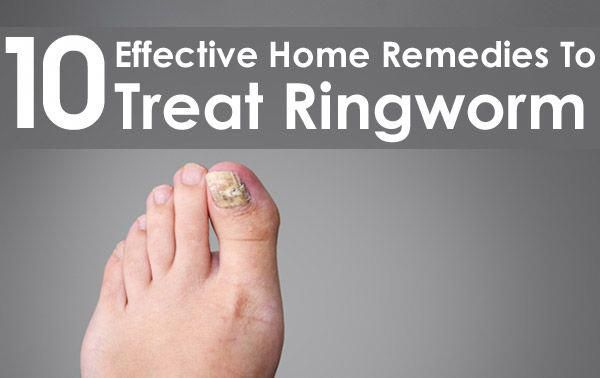 It is most common in women who shave their legs.
It is most common in women who shave their legs.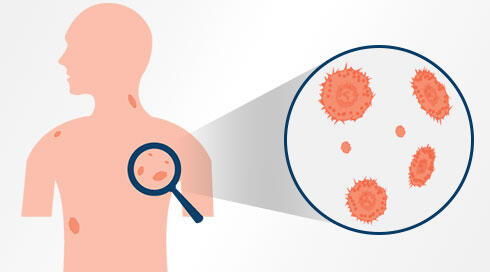
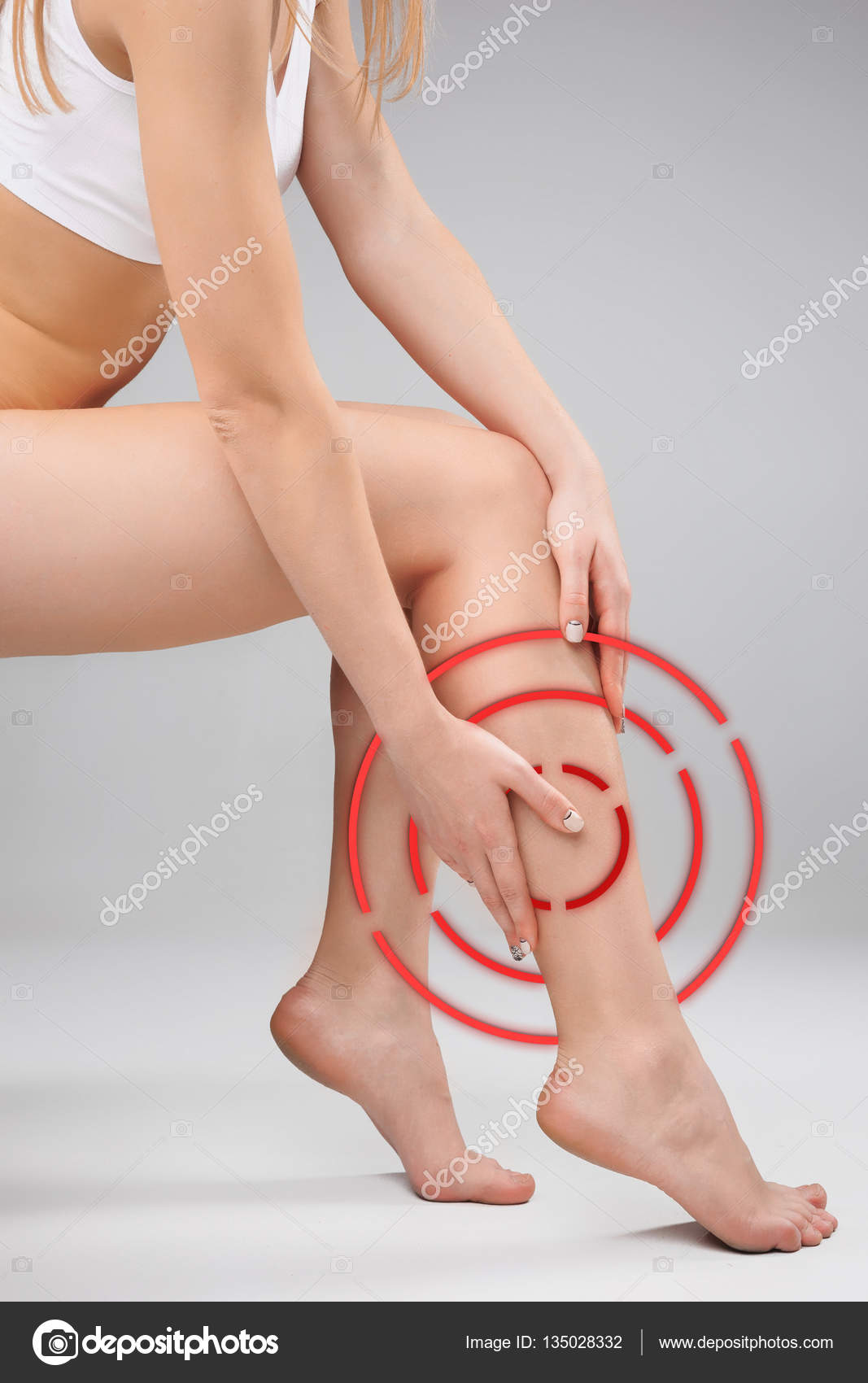
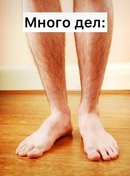
 Nails can be thickened, discolored, brittle and crumbly.
Nails can be thickened, discolored, brittle and crumbly.